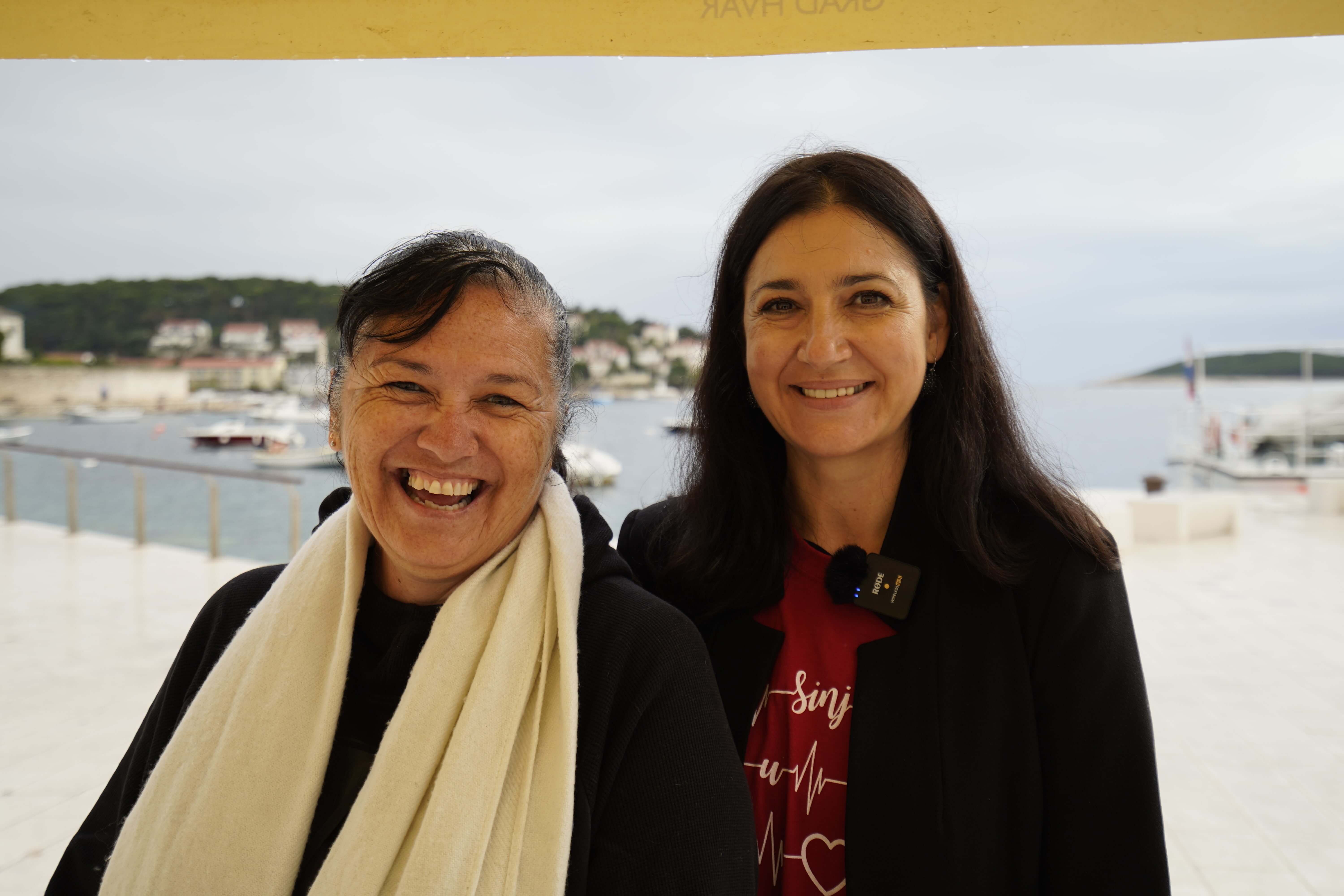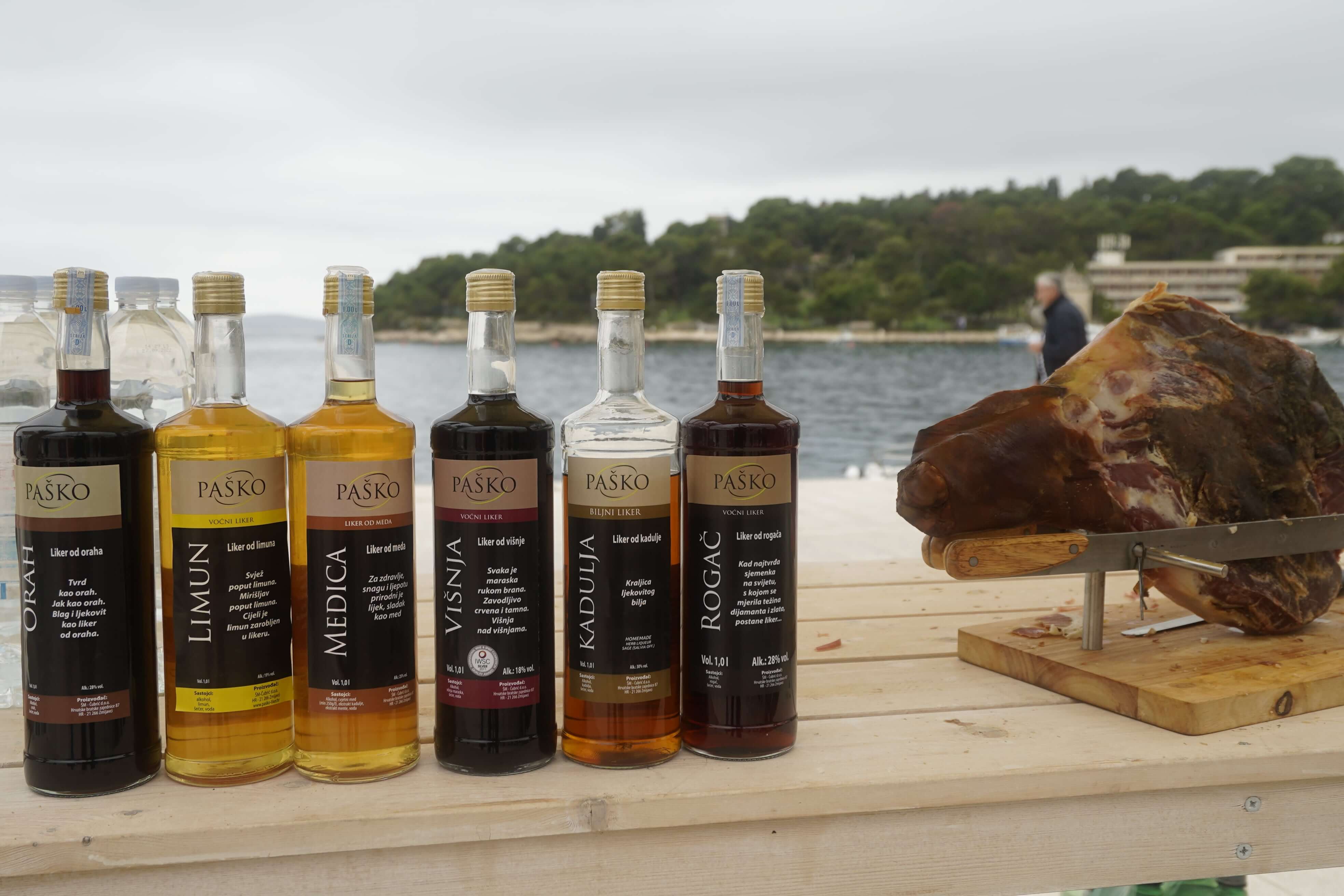Sinj Tourist Board Successfully Holds 'Tourist in Your Town' (PHOTOS)
March 7, 2022 - On March 5, the jubilee, tenth educational 'Tourist in Your Town' event was held under the expert guidance of members of the Sinj Osinium Association of Tourist Guides and curator of the Franciscan Monastery Collection. The outing was organized by the Sinj Tourist Board.
Citizens of Sinj, as well as numerous guests from Split, Trogir, Kaštela, Solin, and Omiš, had the opportunity to get to know the city's sights and invaluable cultural treasures inside the Miraculous Lady of Sinj and in the Collections of the Franciscan Monastery.
The aim of this free educational action is to popularize the historical and cultural heritage as one of the main factors for the development of tourism in Sinj, but also to raise awareness of its importance in society as a whole. It is important to emphasize the important role of local tour guides in the interpretation of cultural and historical heritage, traditional customs, and specifics of the region.
Thus, many participants enjoyed sightseeing and learned more about the Knight's Game Alka, Franciscan Classical Gymnasium, Palace, and Villa Tripalo, Stations of the Cross, Grad and Kamičak fortresses, all under the expert guidance of tourist guide Ivan Vuleta.
The curator, Fr. Mirko Marić, guided them through the impressive exhibits of the Franciscan Monastery Collection. Edo and Mirna Crljen took care of the flavors of Sinj's delicacies.
The Sinj Tourist Board thanks all the participants and all those who helped them bring this to life!
For more on Inland Dalmatia, follow TCN's dedicated page.
Sinj Tourist Board Organizes 'Tourist in Your Town' Event on March 5
March 2, 2022 - After last year's break caused by the pandemic, the Sinj Tourist Board is organizing the educational action 'Tourist in Your Town' for the 10th time!
Namely, since 1990, at the initiative of the World Federation of the Tourist Guides Association based in Vienna, February 21 has been marked as the International Day of Tourist Guides.
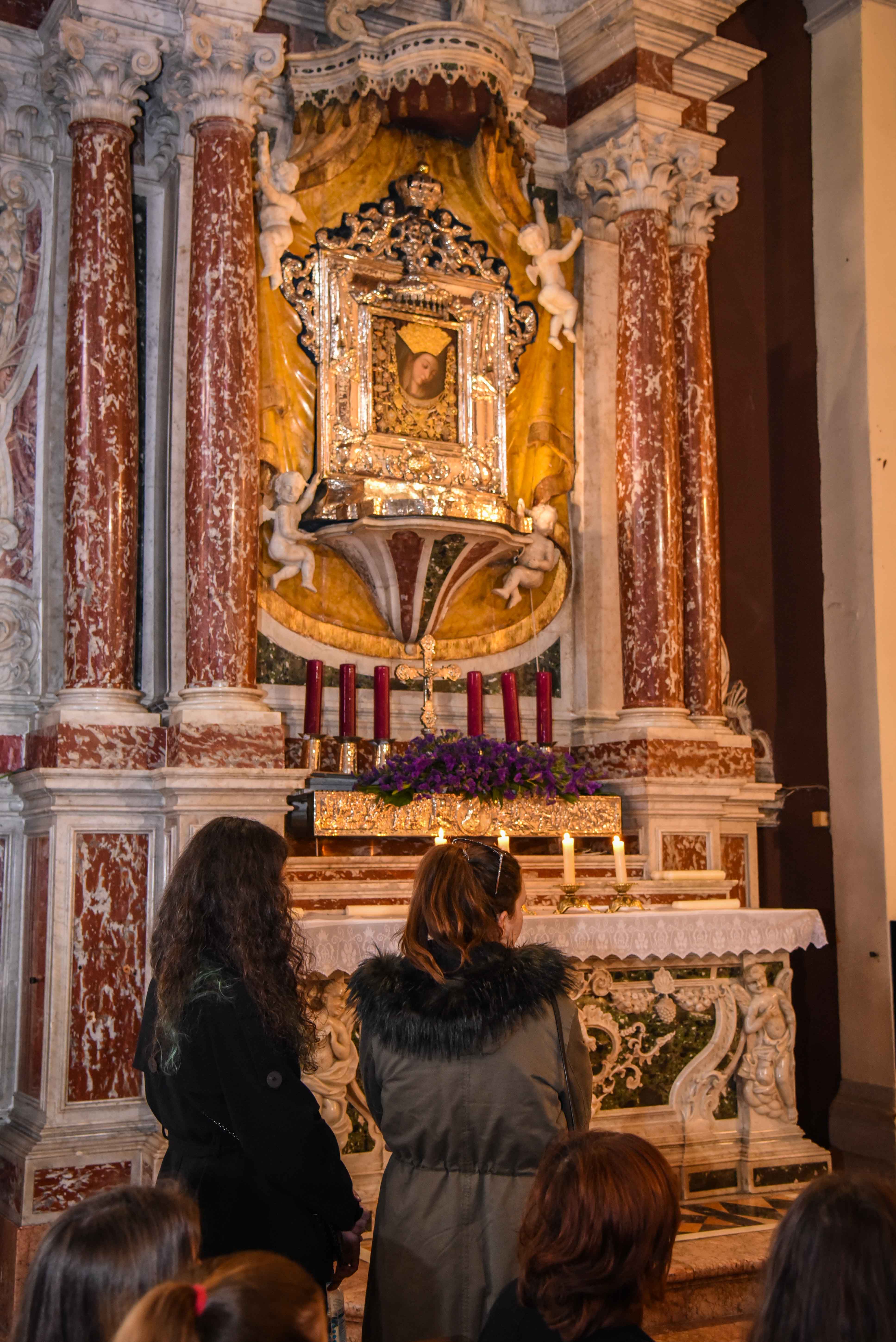
On this occasion, the Sinj Tourist Board invites all esteemed fellow citizens and their guests to join in on Saturday, March 5 at 10 am at the Alkar Racecourse (next to the Alkar Monument), from where you will visit the Archaeological Collection of the Franciscan Monastery and have a tour of the Church of Our Miraculous Lady of Sinj, numerous cultural and historical monuments, and the Kamičak and Grad fortresses (planned tour duration - 2.30 hours).
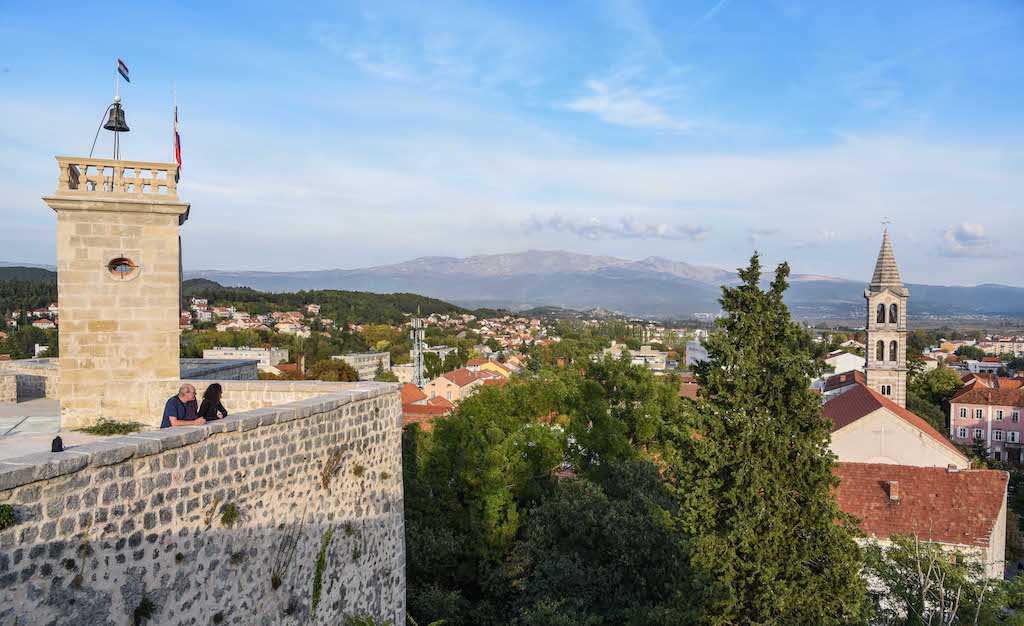
The goal of this free educational action is to popularize the historical and cultural heritage as an important factor for the development of tourism in Sinj, but also to raise awareness of its importance in society as a whole.
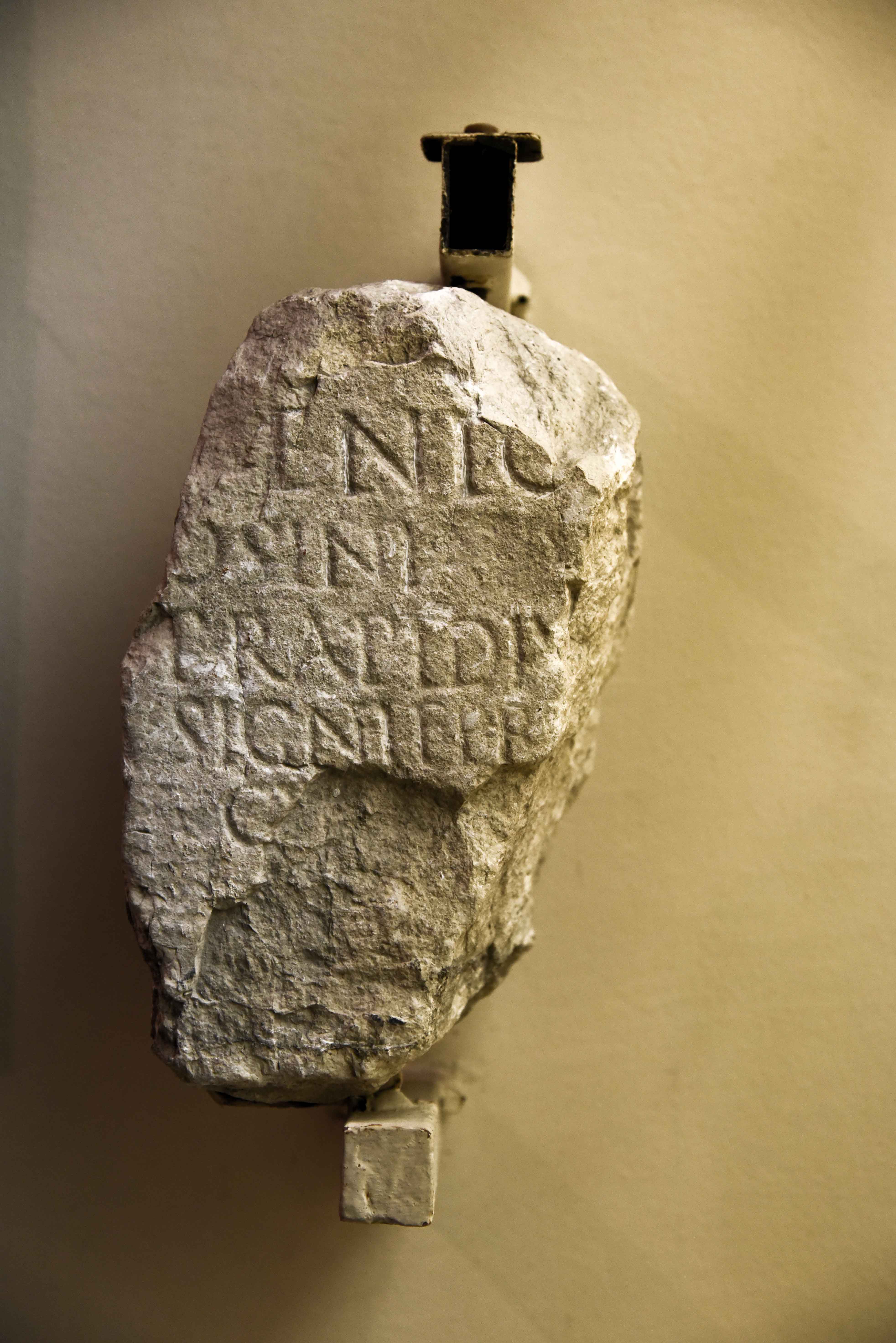
Do not miss the opportunity to see many city sights with expert guidance, but also the impressive exhibition of the Archaeological Collection of the Franciscan Monastery.
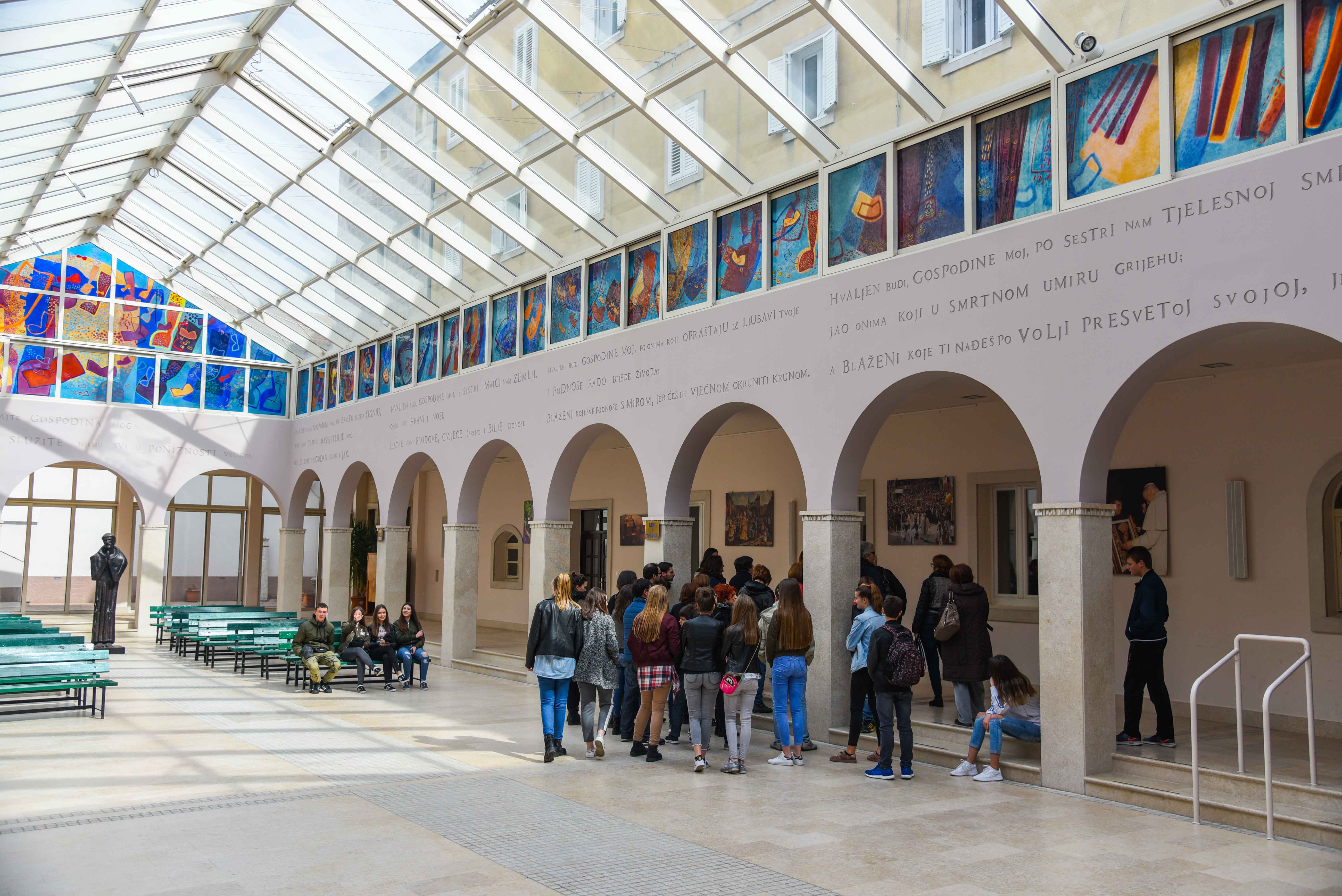
In order to properly organize, please confirm your arrival by phone at 099 4500305 or email This email address is being protected from spambots. You need JavaScript enabled to view it..
Ancient Wells of Rajčica Valley, Inland Dalmatia's Hidden Wonder
February 14th, 2022 - While most tourists tend to gravitate towards the coastline, there are many hidden gems to discover in inland Dalmatia. Meet the wells of Rajčica valley, a magical place that looks as if it came straight out of a fantasy novel
Less than an hour’s drive from Split, in the rugged karst landscape of the Klis hinterland, you’ll stumble upon an extraordinary site. Known as Rajčica, the valley near Nisko village is home to a cluster of 10 ancient wells.
And when we say ancient, it’s actually a bit hard to pinpoint the moment in time when the wells were built. They are commonly referred to as Roman wells, some believe they're from the Illyrian times, and it’s also said they date to late Middle ages, namely the 13th or 14th centuries.
Whatever the case, there’s a certain mystical quality to the picturesque site; it appears to be timeless. The wells are all alike in size and design; they’re closely spaced, each encircled by a dry stone wall and fitted with stone steps descending to the water surface.
Three of the ten wells are shrouded by greenery and have a lower water level, making them somewhat harder to spot. Since the site is located in a valley, heavy rain will often leave the area flooded; during summer droughts, the water level drops.
It’s unknown whether there are any underground rivers in the area, or if the wells are mainly getting water from precipitation. Nestled among the wells is a small pond where the cattle roaming the area often comes to drink.
The name of this wondrous site is another mystery that remains unsolved. Why Rajčica valley? The name literally translates to tomato in Croatian, but it’s believed to be more likely to refer to the place being a paradise in nature (raj = paradise, heaven). Finally, there are sources that claim the toponym originates from a family name that had a historical presence in the area (the valley of the Rajčić).
The wells of Rajčica used to be a seldom visited site, hidden away in a somewhat inaccessible location where one would have to fight their way through the thicket to get to the untouched clearing.
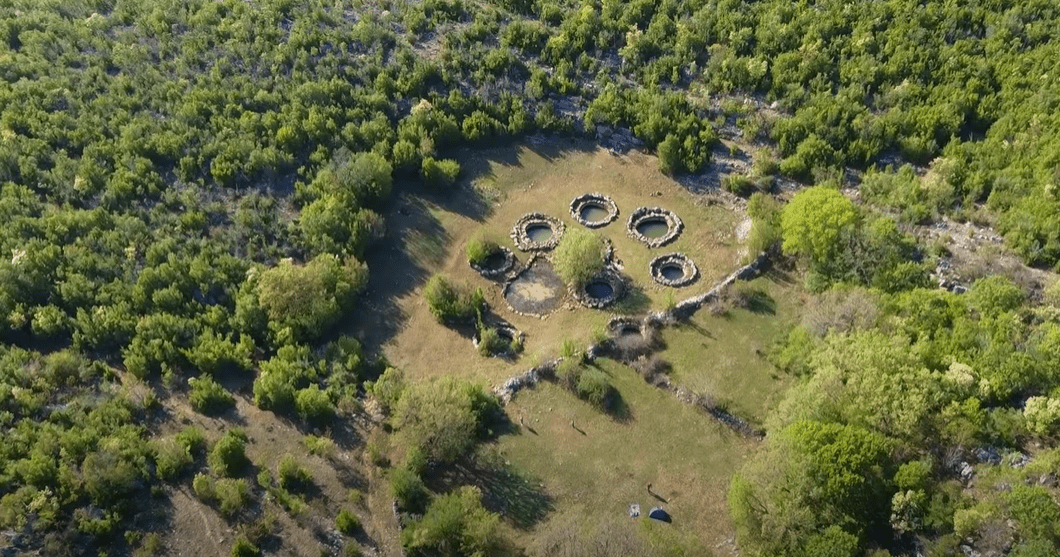
Rajcica valley / YouTube screenshot
These days, it’s more visitor-friendly. Backed by EU funding, Klis Municipality first had a forest road restored that connected the nearby villages of Brštanovo, Nisko and Matase, and which also doubles as an access road to Rajčica valley.
In a more recent part of the project, they had a picnic site built near the ancient wells. As of late 2021, there are seating areas, a grill, and even a balota rink as a nod to one of Dalmatia’s favourite pastimes.
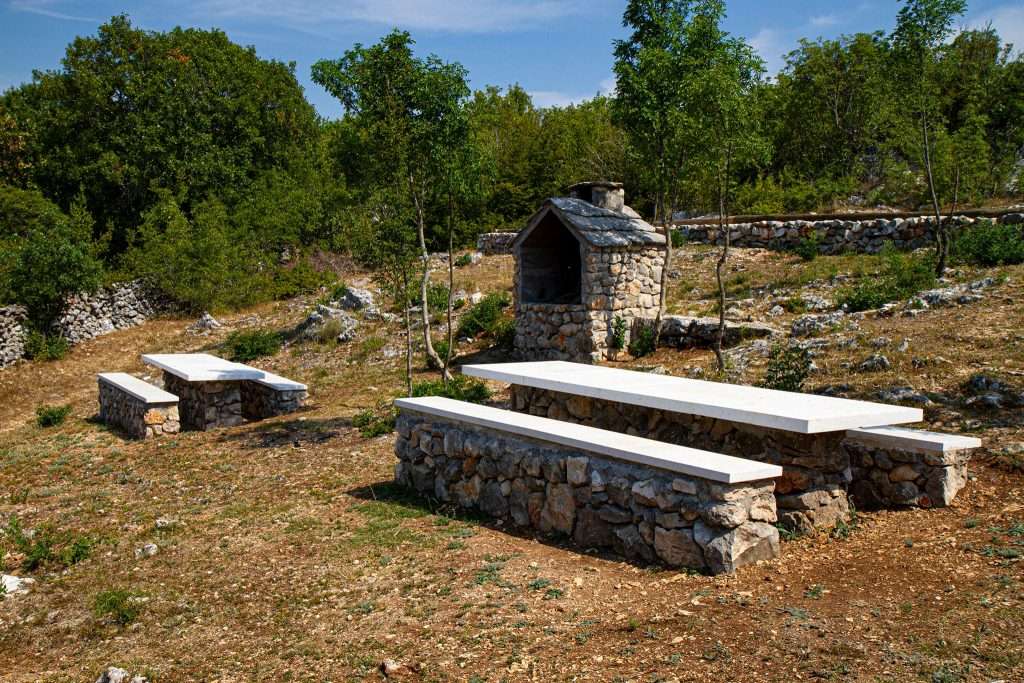 Picnic area / klis.hr
Picnic area / klis.hr
Rajčica valley gained in popularity since it was touched up a bit, especially as the pandemic drove more people to forgo urban destinations and spend time in nature instead. It’s not overcrowded yet, so if you happen to be looking for trip ideas, it just might be the perfect moment to visit the mystical wells before they become too popular among the locals and tourists alike.
2021 Sinj Advent Program is Here!
November 27, 2021 - The 2021 Sinj Advent program is here, with many festive things to enjoy this year, from an ice skating rink to gramophone records fair!
The sweet anticipation of Christmas is slowly approaching. Socializing with the enticing aromas of mulled wine and delicious snacks guarantees a good time for all those who want to feel the Christmas magic through a handful of fun and unique events in a festive atmosphere.
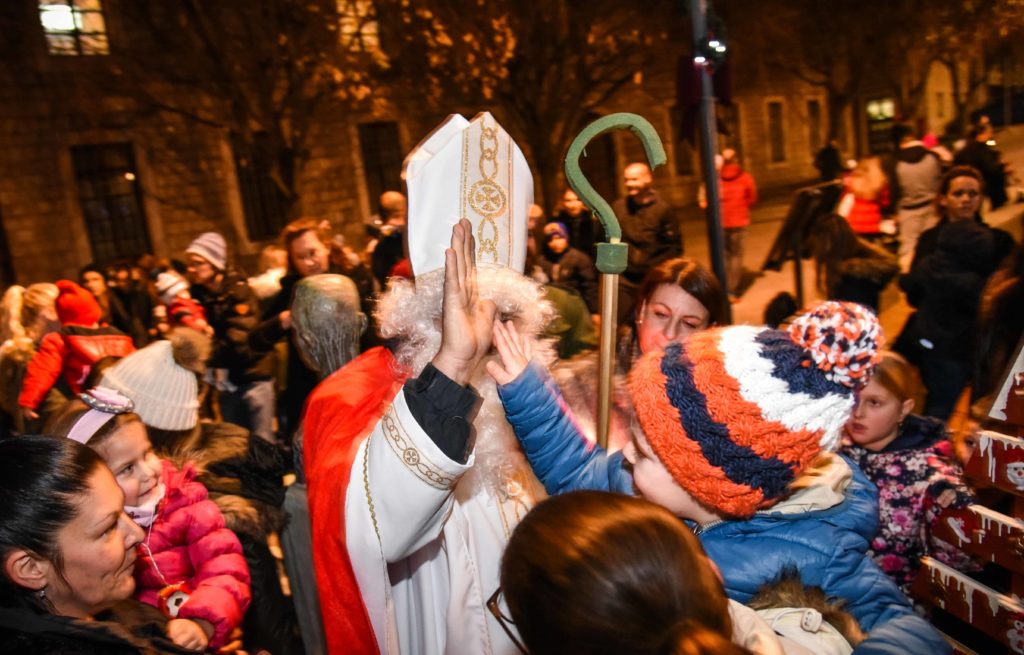
Many different events have been prepared for the youngest. They even have their own Children's Week called "Days of Joy, Games, and Peace" organized by the association Whole Life, which begins on the feast of St. Nicholas and lasts until the feast of St. Lucia. The Cetina Region Museum brings an edition of an exciting publication, and on the eve of St. Lucia, the customs and traditions associated with its feast. After polishing their boots well, the little ones will enjoy (but also perform) plays, music and dance performances, choir performances! The Sinj Tourist Board, organized by the Association Prokultura and in cooperation with the City of Sinj, the Sikirica Gallery, and the Cultural and Artistic Center, is setting up an exhibition of photographs "Angels" by the famous photographer Ivo Pervan.
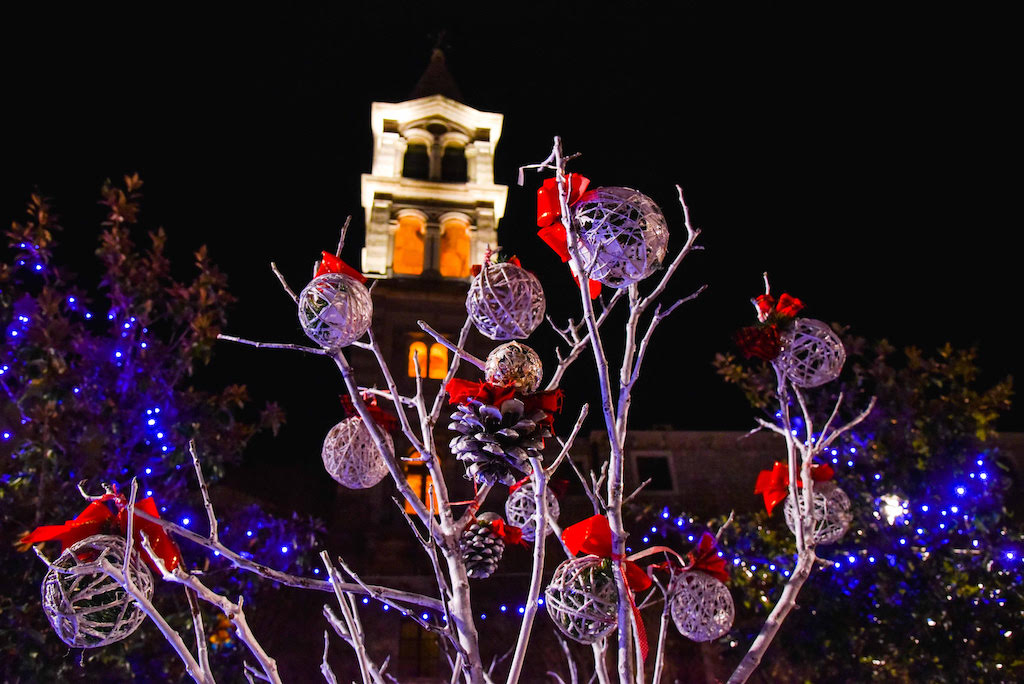
Numerous valuable and active associations from Sinj and Cetina region have taken several exciting events and actions. Visitors will enjoy concerts by Adastra, Piroman, Vocal Ensemble Jedinstvo, Ana Malovan, Sinj City Music and Mixed Choir, KUD Osinium, Vrilo, and in Disk pod Zvijezda, and the Sinj Majorettes Christmas show. KUD Cetina will take us back in time with its staging of Christmas Eve in the Cetina region, Sinj ferali will delight with an invitation to an evening of poetry and prose with music, and Sinj Folk Theater will contribute to the festive atmosphere with performances. Associations SRMA and Sinjski ferali will decorate the city. The commendable humanitarian action Santa's Equestrian Caravan will delight many children in this most magical time. On the eve of the Advent candle lighting, pilgrimages will be organized along the Path to Our Lady of Sinj from Dugopolje, Dicmo to Sinj. After prayers and blessings, pilgrims will join in the Advent candle lighting. There will be a gramophone records fair for the first time and, after many years, a skating rink!
The New Year's Eve celebration will begin with style: the youngest will be given a children's New Year's Eve organized by Sinj ferali, followed by Sinj culinary specialties, and finally, everyone will welcome the New Year.
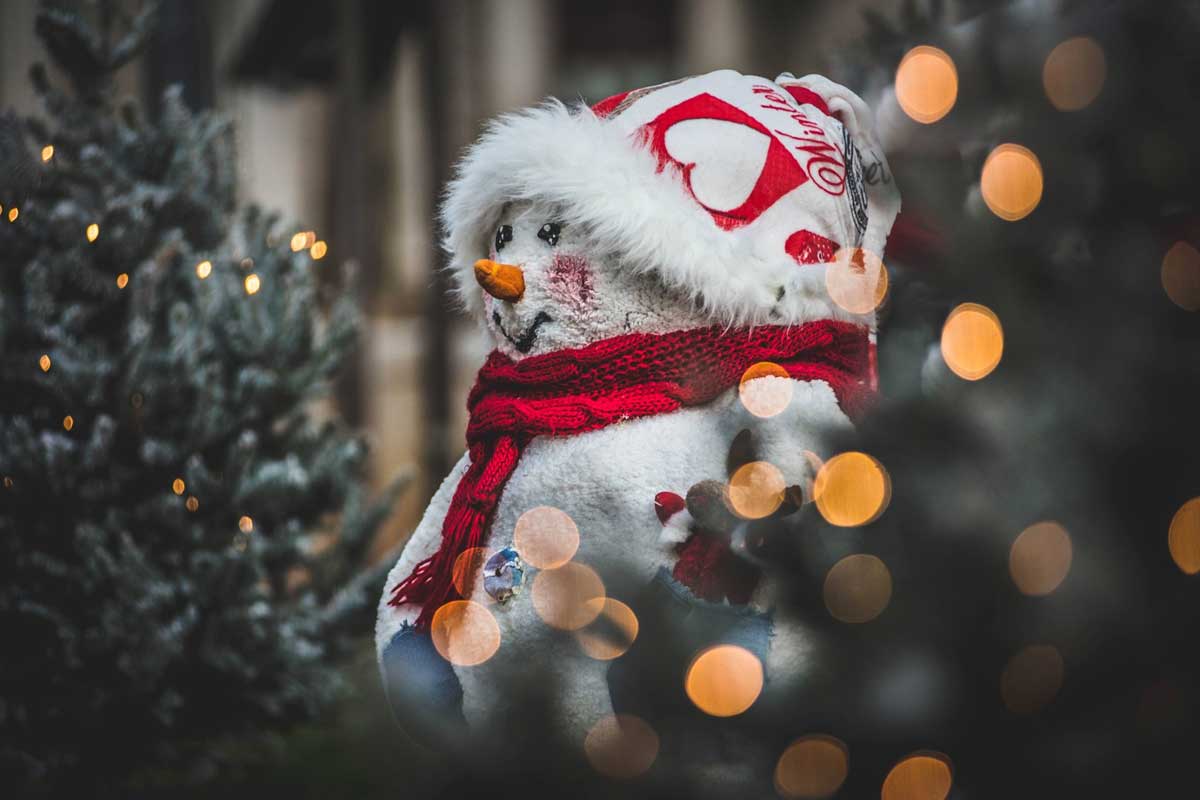
The Sinj Advent is organized by the City of Sinj, the Sinj Tourist Board, the Shrine of Our Miraculous Lady of Sinj, and numerous institutions and associations from the Sinj area.
The Advent program in Sinj will take place following the recommendations of the Civil Protection Headquarters and the current measures of the CNIPH.
For more on Inland Dalmatia, follow TCN's dedicated page.
Alka Knights Society Invited to Macron Meeting at in Zagreb!
November 25, 2021 - The Alka Knights Society will attend a gala lunch with French President Emmanuel Macron at the Esplanade in Zagreb!
Hajduk is not the only association from Dalmatia that received an invitation to a gala lunch with French President Emmanuel Macron. Representatives of the Alka Knights Society received an invitation on Wednesday to join the French president at the Esplanade table in Zagreb!
"We are extremely honored by the invitation, and we will gladly respond. As urgent obligations personally prevented me, I decided that Dr. Ivan Nasić, secretary of the Alka Knights Society, would go to the festive lunch. In the ceremonial uniform, President Macron would be greeted by Alkar Andrija Hrgović and Alkar boy Ivan Vučković. We hope to welcome President Macron's birthday in France as well," the president of the Alka Knights Society, Dr. Stipe Jukić, said for Slobodna Dalmacija.
Jukić's hope of meeting with President Macron in France is about the expected presentation of the Sinj Alka in Versailles. The Alka's first visit to France was agreed in detail before the Croatian presidency of the EU, as part of Croatia's cultural and historical presentation to Europe. In addition to the ceremonial parade of the entire Alka procession in the area of the historic French castle, the Alkars were to demonstrate the course of their knightly game.
Unfortunately, this did not happen due to epidemiological measures due to the COVID-19 pandemic. Nevertheless, as the French hosts liked the idea, the invitation remained open as soon as the conditions were created. In Sinj, they reckon that if the pandemic subsides, the Alkars could parade through Versailles in the spring of next year, and then, they believe, they would undoubtedly be able to greet the main host, President Macron.
"The Alka Knights Society was founded in 1715, and today it acts as an association of citizens.
The main activity of the Society is to organize the Alka Tournament of Sinj. A great number of volunteers care about the work of the Society (Assembly, Governing Board, Supervisory Board, Court of Honour). The members of the Society are exclusively of local origin. The Alka Knights Society is the owner of two trading companies – Alka marketing d.o.o. and Alkarska ergela d.o.o.
In 1979 the Alka Knights Society collection of uniforms, equipment and weapons was declared a monument of the highest category. In 2007 the Alka of Sinj was entered in the Register of Croatian Cultural Monuments, and on 16th of November, 2010 it was included in the UNESCO Representative List of the Intangible Cultural Heritage of Humanity," reads the Alka website.
For more on Inland Dalmatia, follow TCN's dedicated page.
Inland Sinj to Island Hvar - Collaboratively Celebrating Croatia’s Cultural Riches and Natural Diversity
Wednesday, 10 November 2021 - We can’t say enough about the amazing hospitality, divine local cuisine, wines, prosciutto, and bread that we experienced at Peškafondo and Big Game Fishing Competition held on the 5-7 November 2021. It is definitely an experience we look forward to attending again in the future, telling others about it and shouting it out to the world, in our endeavour to promote Croatia as an all-year-round destination.
Celebrations
What was also apparent over the weekend was the willingness for all to contribute to the success of this post-season event and to draw more attention to Croatia as a whole, not just Hvar. Arriving on Friday we were thrilled to meet Monika Vrgoč from the Sinj Tourist Board. We were also curious to know how and why Sinj was involved in the event as it is an inland area of Dalmatia in our minds not terribly associated with the islands or to Hvar.
Lucky for us it didn’t take long to figure the how they were involved as lunch for the first day of celebrations was a Sinj specialty, arambaši. This was served alongside cured meat products and traditional music, all providing a very homely heartwarming feel to the event, despite the weather and rain.
Tucking into the arambaši, we wanted to know more. We were thrilled to learn that the Peškafondo isn’t just to promote the island, seafood, and activities. It’s also to showcase the amazing culture of Croatia from inland to the coast, to the islands, and everything in between.
Sinj Traditional Specialities
- Arambaši
Coming to Hvar the chefs from Sinj turned out their traditional specialty: arambaši, a most important festival dish. The arambaši of Sinj consists of chopped beef, smoked bacon wrapped up in pickled cabbage leaves together with a special and traditional blend of spices, including onion, red onion, parsley, pepper, and salt. These cabbage rolls are arranged in a pot along with a beef bone, covered with finely cut pickled cabbage, adding a piece of prosciutto and a few homemade sausages, locally known as sudžuk. This is then left to cook for several hours with no mixing. The aroma that wafted around the event as everyone was arriving, kept everyone on alert clear that there was going to be a great feast for lunch. And we were not disappointed.
We also learnt that while to the foreign/untrained eye, arambaši may look like regular sarma. But sarma IT IS NOT! It differs from sarma in three distinct ways: the meat is chopped, not minced, there is no rice added to the chopped meat mixture and the spice blend is different from the spices used in sarma, creating a unique and traditional taste.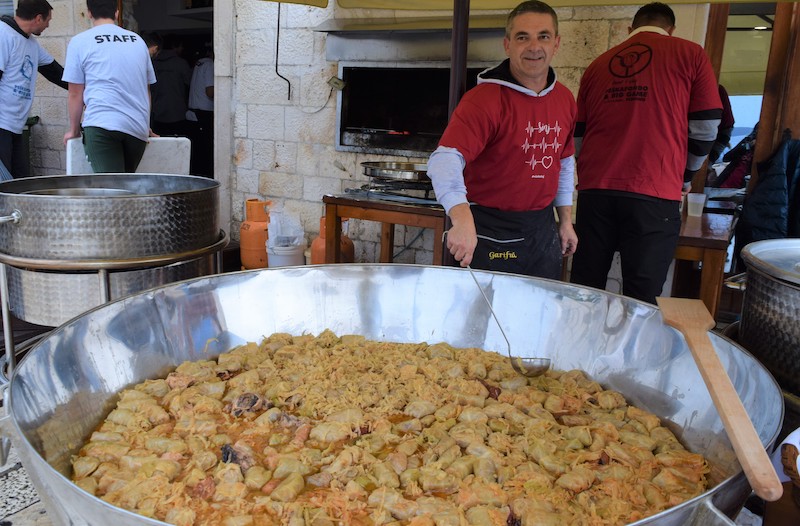
- Uštipci
Along with the arambaši, we were also treated to another speciality of Sinj cuisine called uštipci, a long flat deep-fried bread that was served with a smooth flavoured young cheese. Another delicious specialty of Sinj. Huge thanks to the Sinj Tourist Board in Cooperation with the Secondary School Vocational and the Red Cross for putting on such a great spread!
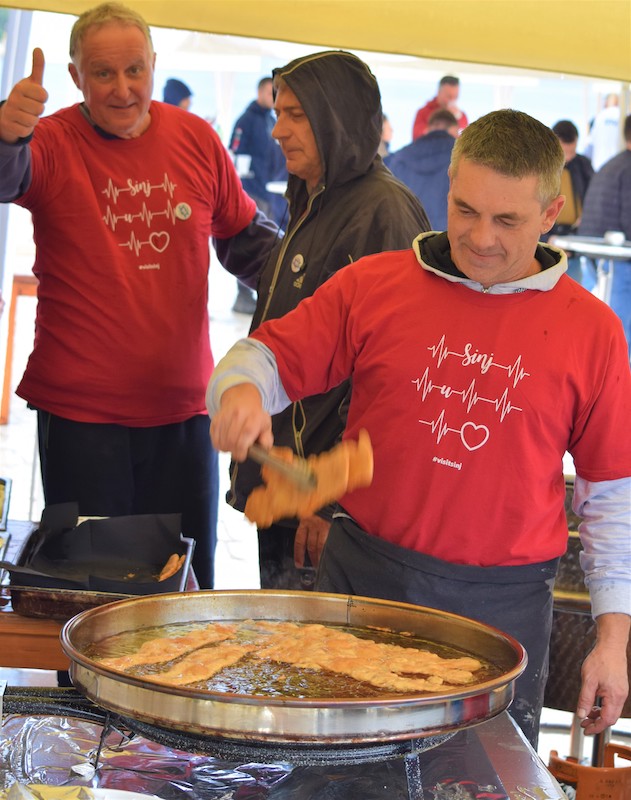
If you, like us, had no idea where Sinj is or what it has to offer, here is a quick overview:
- According to the 2011 census, the town itself has a population of 11448 inhabitants, with the immediate surrounding area having a population of 24,832.
- Located in the heart of the Dalmatian hinterland, Sinj is 30km from the Adriatic Sea.
- The town is surrounded by beautiful mountains of Kamešnica, Svilaja, and Dinara.
- It is situated at the edge of the fertile Sinjsko Polje Valley and invigorated by the amazing crisp, clear Cetina River.
And it’s not just the location that makes Sinj such a great place to visit. We were pretty impressed to hear about the activities and offerings that Sinj has available throughout the year. From the history contained both in the museums as well as the living history demonstrated at the festivals, to more active pursuits like hiking, skydiving... The list goes on!
The Alka tournament sounds amazing! So much so that we have put it into our diary next year. Learn more about this global festival here.
Cooperation and Collaboration
Now we can’t just leave this story here because on the second day there was another amazing collaboration, with chefs and friends from Skradin outdoing themselves with serving their famous Skradin risotto and of course famous oysters for lunch. Find out more about this amazing slow-cooked dish in an article written by Expat In Croatia.
Again, the food was delicious, amazing smells and tastes, and very interesting for us to learn about the cooperations that were going on to create this festival.
The squid was like the second event, the main event being the people altogether, celebrating the great atmosphere from the sea from the culture, and from the people.
If this is anything to go by combining resources and creative efforts means increased reach and exposure while spending more efficiently. Together, we will elevate Croatia’s platform, enabling Croatian culture to thrive as an all-year-round tourism destination.
Read some history to the Peškafondo event here: Celebrating Ten Years of Peškafondo
Sinj Culinary Offer Presented at 2021 Peskafondo & Big Game Fishing Event on Hvar
November 9, 2021 - On Friday, November 5, 2021, the Sinj culinary offer was presented as part of the 2021 Peškafondo & Big Game Fishing event on Hvar.
The Sinj culinary offer was presented thanks to the City of Sinj and the Sinj Tourist Board and in cooperation with the Ban Josip Jelačić Secondary Vocational School and the Sinj Red Cross.
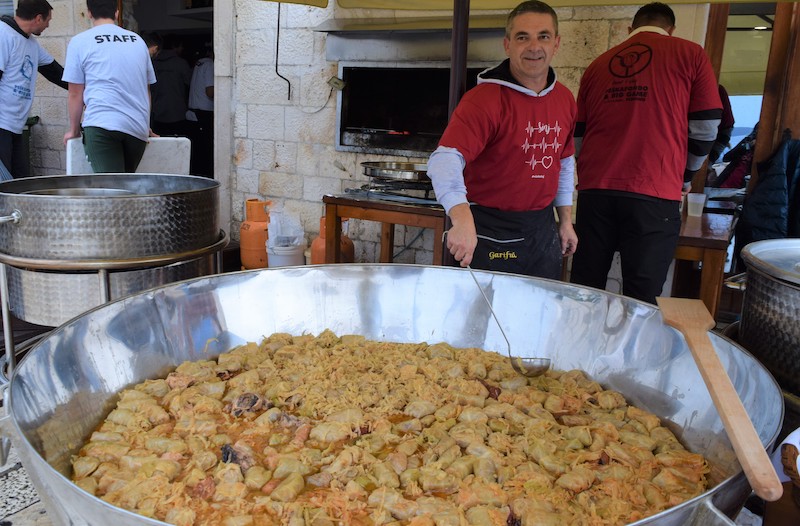
Namely, after a short break, and in accordance with epidemiological measures, the 10th international fishing and tourist event "Peškafondo & Big Game Fishing" was successfully held from November 5 to 7 on the island of Hvar. It is an attractive post-season event traditionally organized by the association "365 Gariful Hvar", in cooperation with several Hvar restaurants. The event was attended by 48 teams from all over the Croatian coast, as well as from Slovenia and Serbia (Vojvodina).
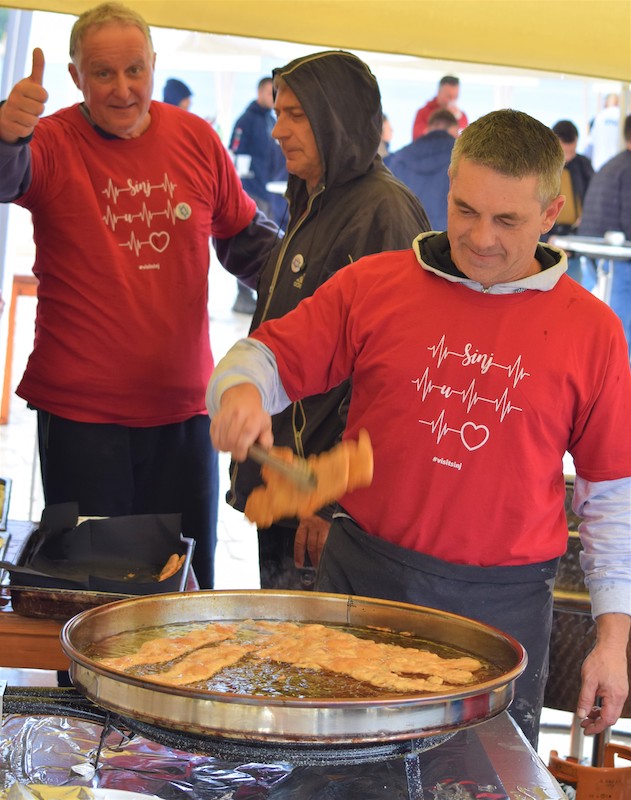
At the invitation of the organizers, and at the initiative of Ivica Bilandžić, Mladen Šimac, Svemir Šimac, Damir Mandac, Damir Alebić, Teo Rako, and Mario Bilandžić, who have been participating in this event for many years, the Sinj culinary offer was presented at the event, through local dishes: Sinj arambaša, fry bread with young cheese and Sinj gingerbread, which were prepared by students and professors of the Ban Josip Jelačić Secondary School, OPG Edo Crljen, and OPG Župić.
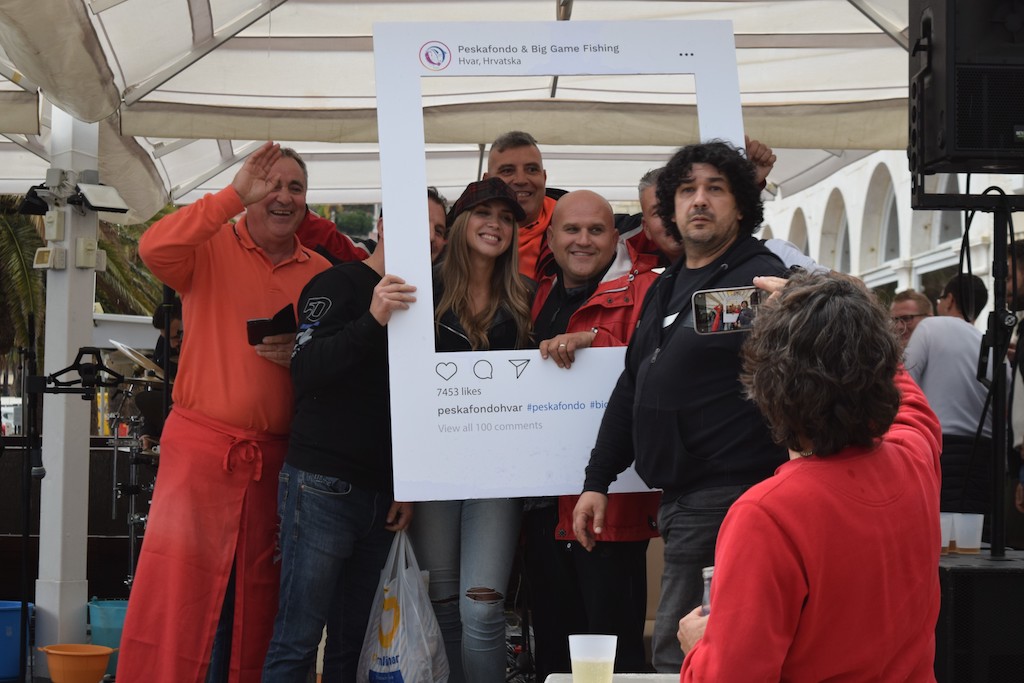
"The presentation and offer of our specialties, despite the unfavorable weather conditions, delighted the hospitable organizers and numerous visitors of this event. We truly thank everyone who helped us in the realization of this project," concluded the Sinj Tourist Board.
For more on Inland Dalmatia, follow TCN's dedicated page.
Discovering Authentic Croatia's Secrets With Seoski Tourism
November 4, 2021 – Village tourism or countryside tourism - Seoski tourism in Croatia - offers authentic, traditional experiences. Aleksandra Kuratko, secretary of Udruga ruralnog turizma Hrvatske (Croatian Rural Tourism Association) tells us more about it, and their work to help facilitate it
Croatia's visitor offer is evolving and expanding. There are exciting aspects of authentic Croatia to be discovered. Away from the beach, villages inland often look remarkably similar to how they did one hundred years ago. There, crops are grown and produce made in ways passed down through generations of families. And, in some lucky instances, these family farmers are willing to open their doors, invite you inside and show you how they live.
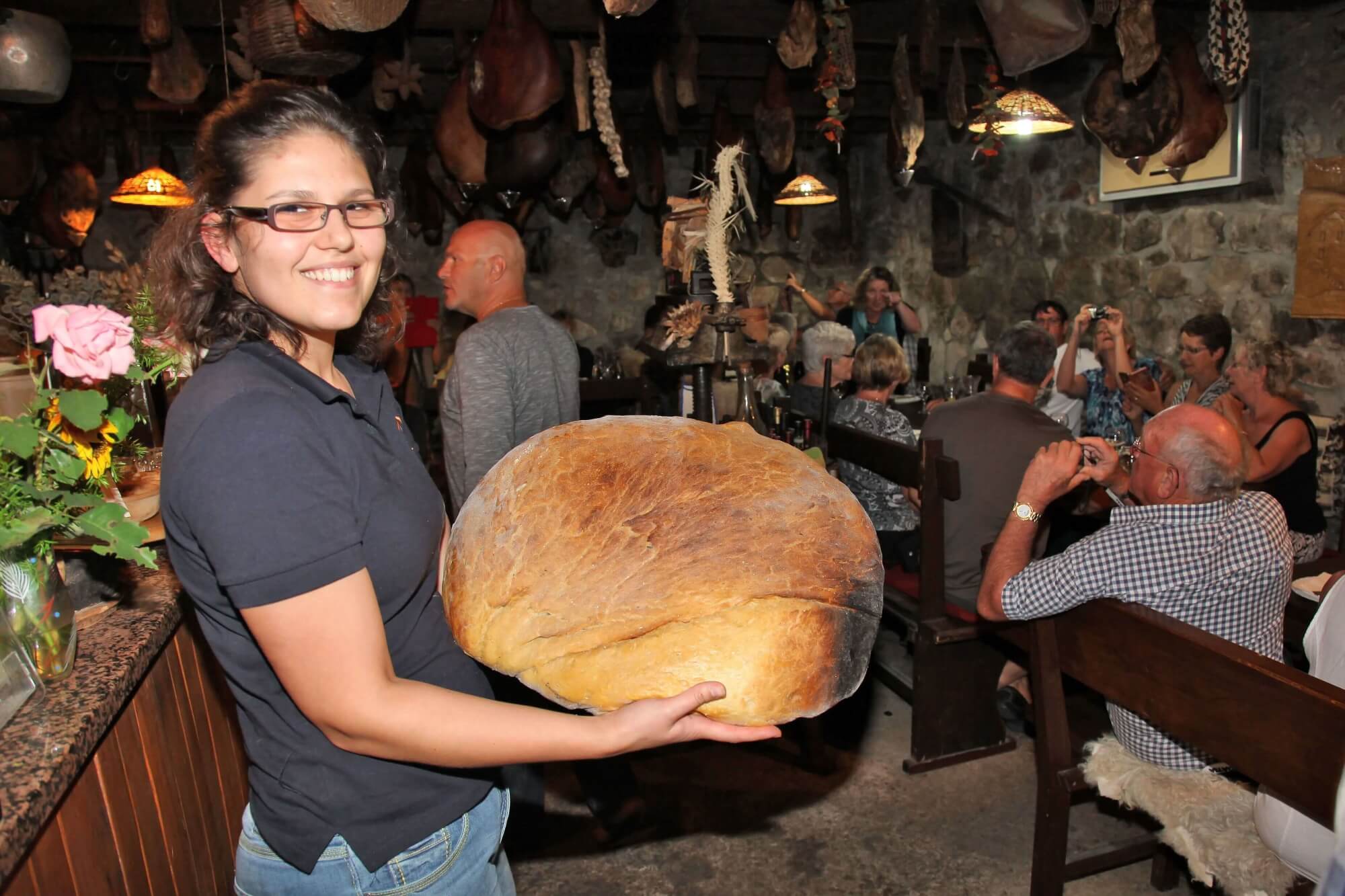 Bread from the peka at Agroturizam Antunović on Pelješac
Bread from the peka at Agroturizam Antunović on Pelješac
Seoski Tourism – translated as either village tourism or countryside tourism – is just that. Family farms that offer hospitality. These are some of the most homely and most welcoming accommodation experiences you can have in Croatia. Offering sights and sounds, tastes and flavours that you can't find anywhere else, visits or stays in Seoski Tourism places have long been loved by locals for weekend breaks or holidays outside peak summer. But, increasingly, these authentic Croatia experiences are being discovered by international visitors.
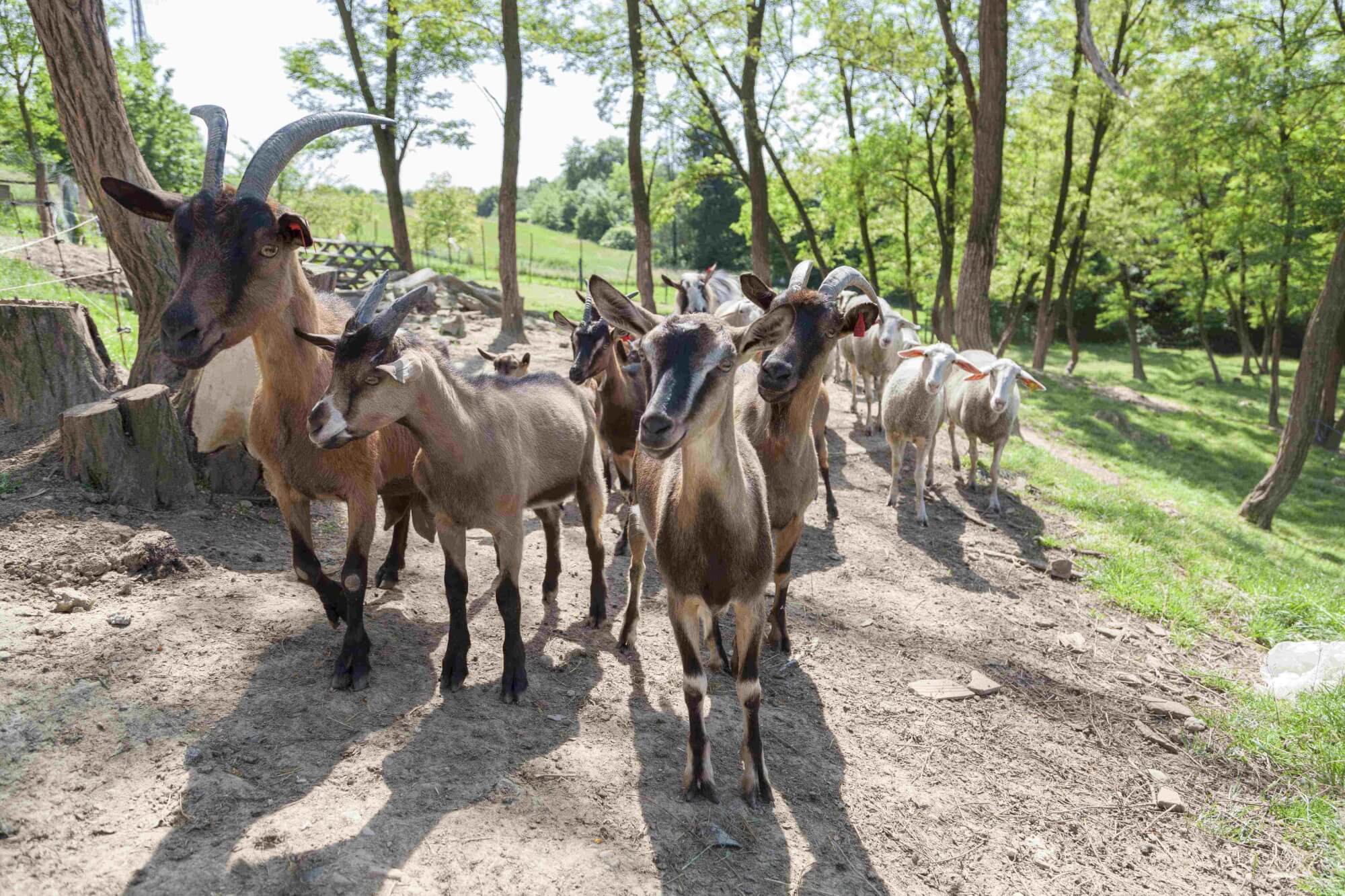 Moslavina goats at Kezele family farm © Davor Konjikušić
Moslavina goats at Kezele family farm © Davor Konjikušić
One institution trying to facilitate the growth in interest is Udruga ruralnog turizma Hrvatske - Croatian Rural Tourism Association. Since it was formed in 2016, they have tried to bring together Croatia's family farm hosts, to promote them and educate them, and to build bridges between these independents and tourist boards, tourist agencies, educators and even the wider world outside Croatia.
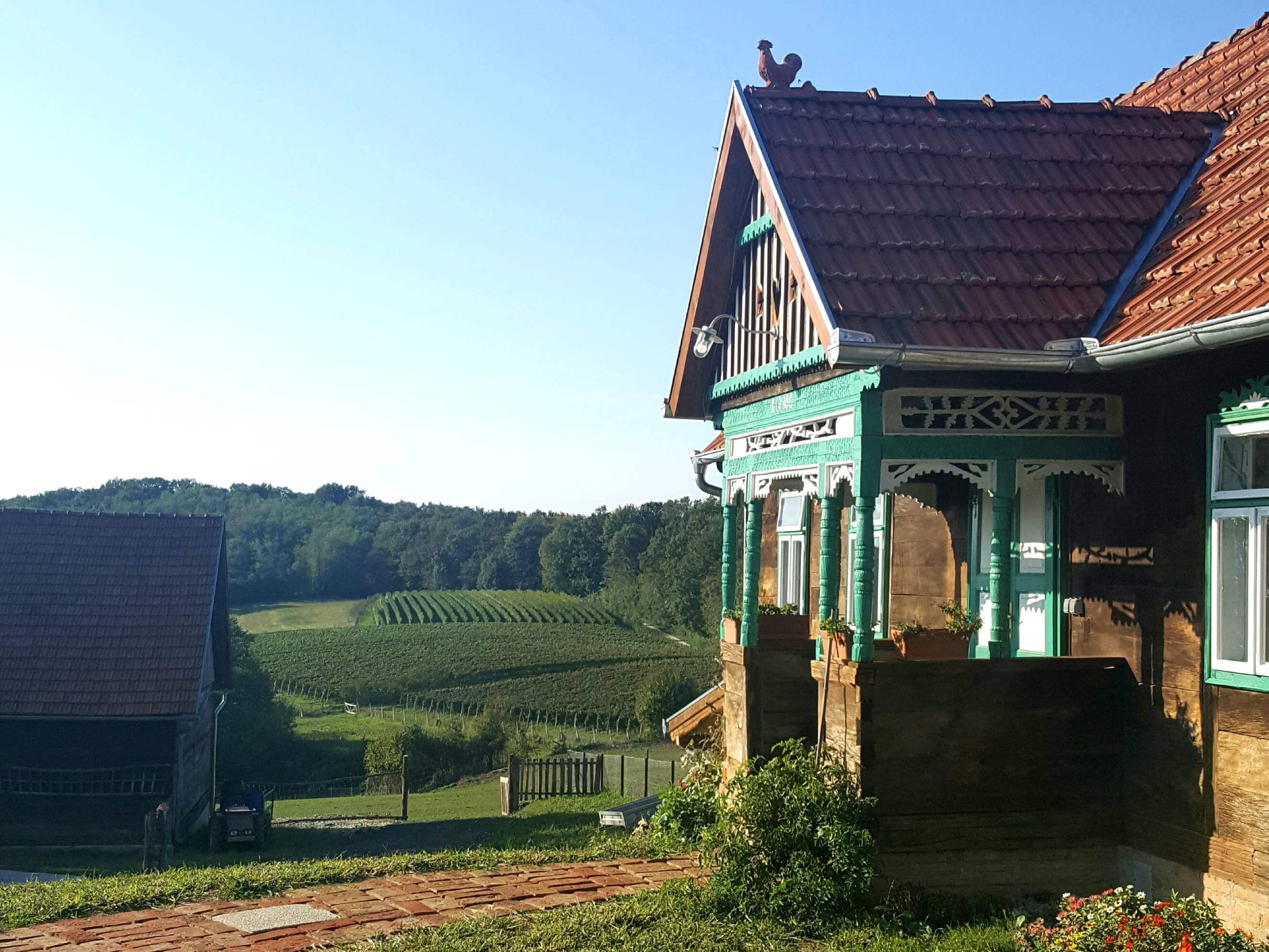 Seoski turizam Kezele in Šumećani, on the border of Zagreb County and Bjelovar Bilogora County © Davor Konjikušić
Seoski turizam Kezele in Šumećani, on the border of Zagreb County and Bjelovar Bilogora County © Davor Konjikušić
Based in Ivanić-Grad, Zagreb County, the Croatian Rural Tourism Association is currently touring the length and breadth of the country, holding workshops with as many Seoski Tourism family farms that will come. And if the farmwork doesn't allow them free time, then they can attend Croatian Rural Tourism Association workshops online.
On the eve of the association's online Seoski Tourism workshops for Central Croatia and Slavonia, TCN interviewed Aleksandra Kuratko, secretary of Udruga ruralnog turizma Hrvatske, to find out more about Seoski Tourism in Croatia.
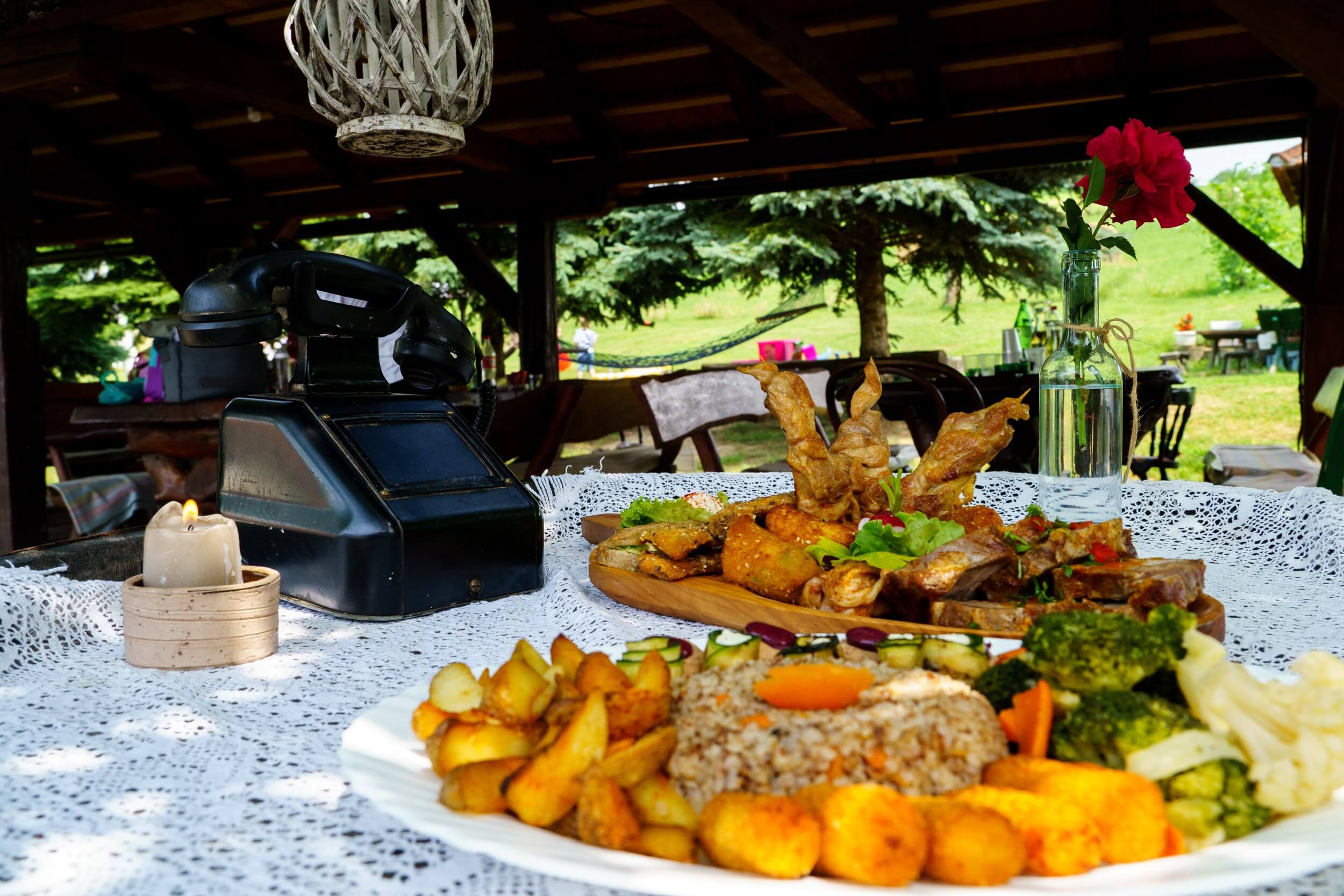 Prigorje specialties at Rakić family farm
Prigorje specialties at Rakić family farm
My name is Aleksandra Kuratko and I am secretary of Udruga ruralnog turizma Hrvatske. As an association, we are 5 years old.
We have 35 members, most of whom are service providers in what we call Seoski Tourism. We also have several tourist boards and two educational institutions as members.
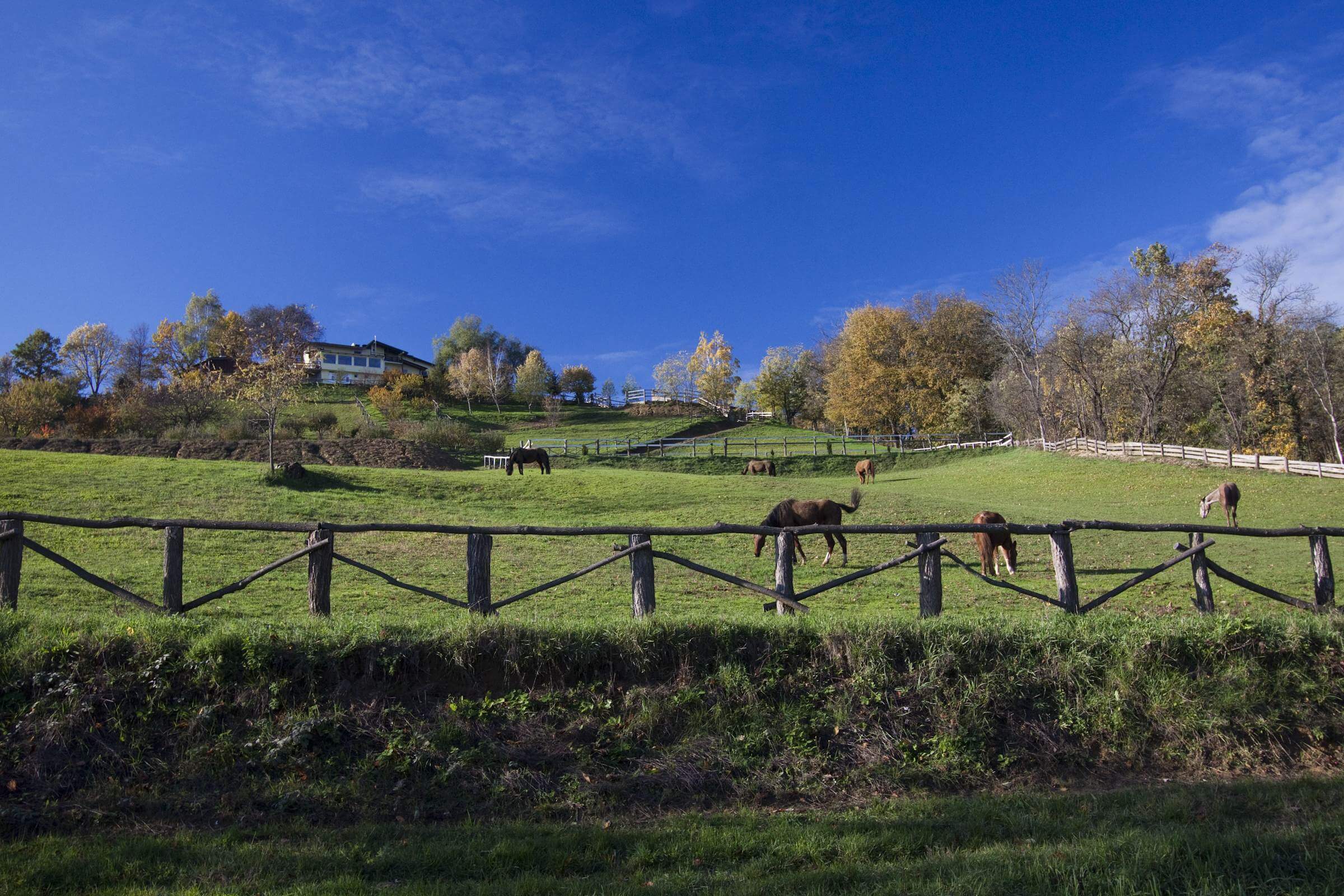 Bilogora horses in autumn at Agroturizam Na malenom brijegu © Vladimir Vlajinić
Bilogora horses in autumn at Agroturizam Na malenom brijegu © Vladimir Vlajinić
Seoski tourism is not quite the same as rural tourism, because rural tourism is many different types of tourism that happen in rural areas. Seoski tourism - which you might translate as village tourism - is quite specific. We assemble people who work in agriculture and who, at the same time, are also offering hospitality. In English, you might call them Farm Stays. Or Agro-tourism – a merging of agriculture and tourism.
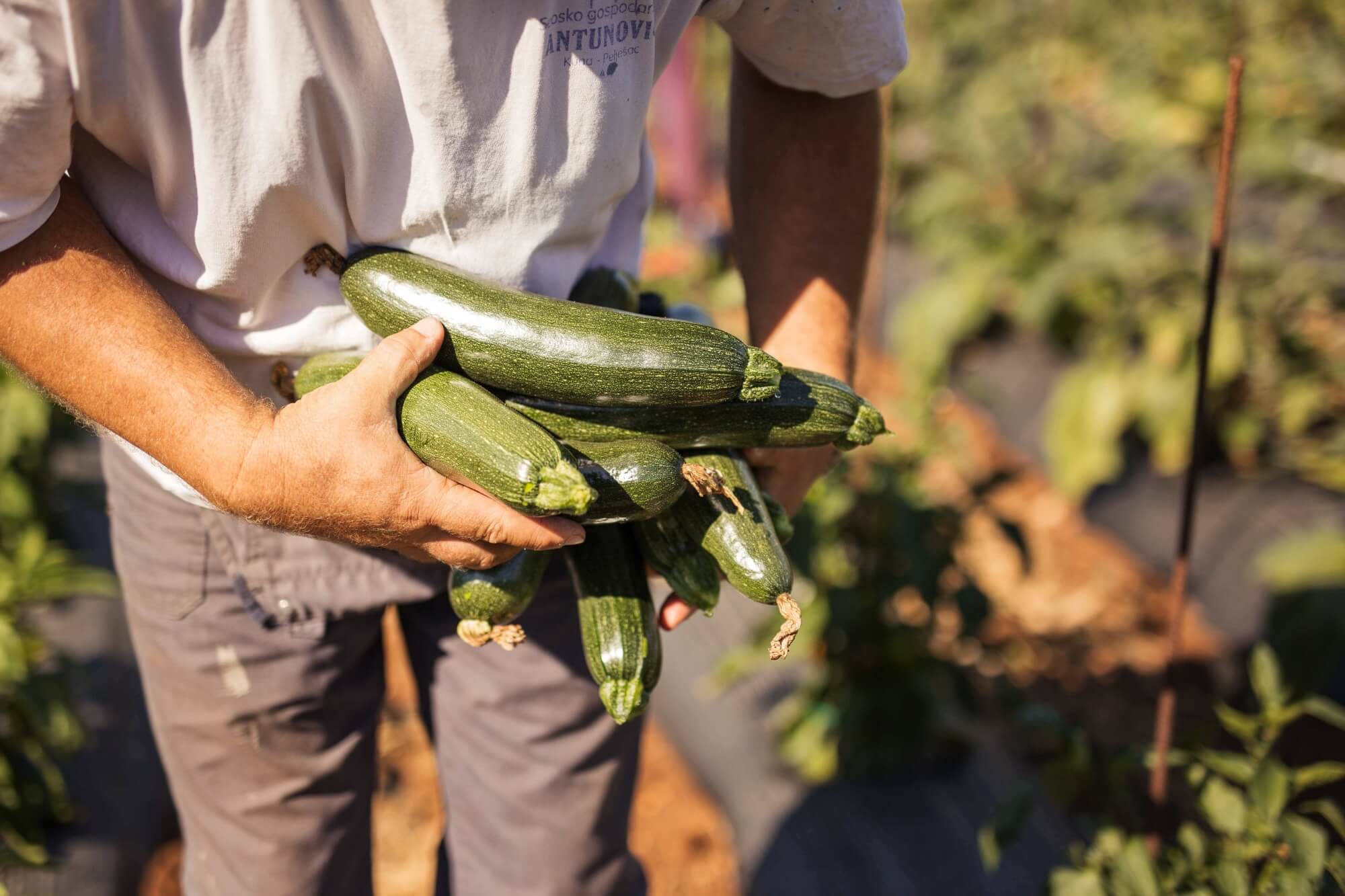 Fresh vegetables at Agroturizam Antunović on Pelješac
Fresh vegetables at Agroturizam Antunović on Pelješac
People who work on agricultural estates often take care of local cultural heritage. For example, they might maintain and renew traditional wooden or stone houses. Many also have etno collections, in which they preserve different objects from their region. Some of these objects might have been used in agriculture and households hundreds of years ago. So, they are preserving the cultural heritage of Croatian villages. This is what we call material cultural heritage. But, there's another kind.
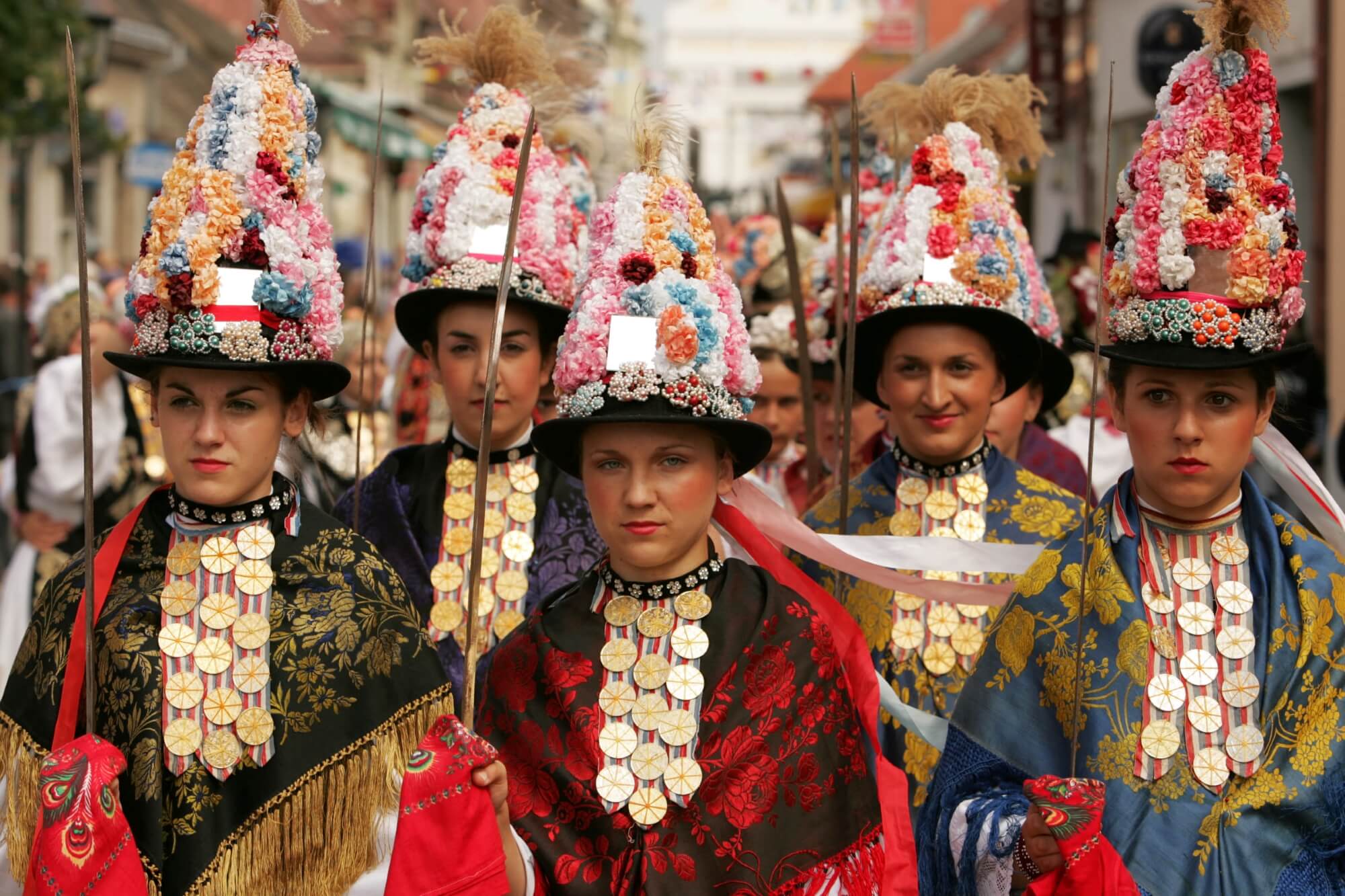 Cultural heritage preserved in one Slavonian village © Mario Romulić
Cultural heritage preserved in one Slavonian village © Mario Romulić
Non-material cultural heritage is also a part. That might be preserving old recipes of traditional, regionally-specific dishes. Or, it might be showcasing the songs and dance of local music.
We are currently running a project which is supported by the Croatian Ministry of Tourism and Sports in which we hold 37 Seoski Tourism workshops in the field all over Croatia. There will also be around 15 online workshops. The workshops are aimed at colleagues who currently operate in Seoski Tourism – they work in agriculture and offer hospitality. Also invited are local tourist boards and local action groups.
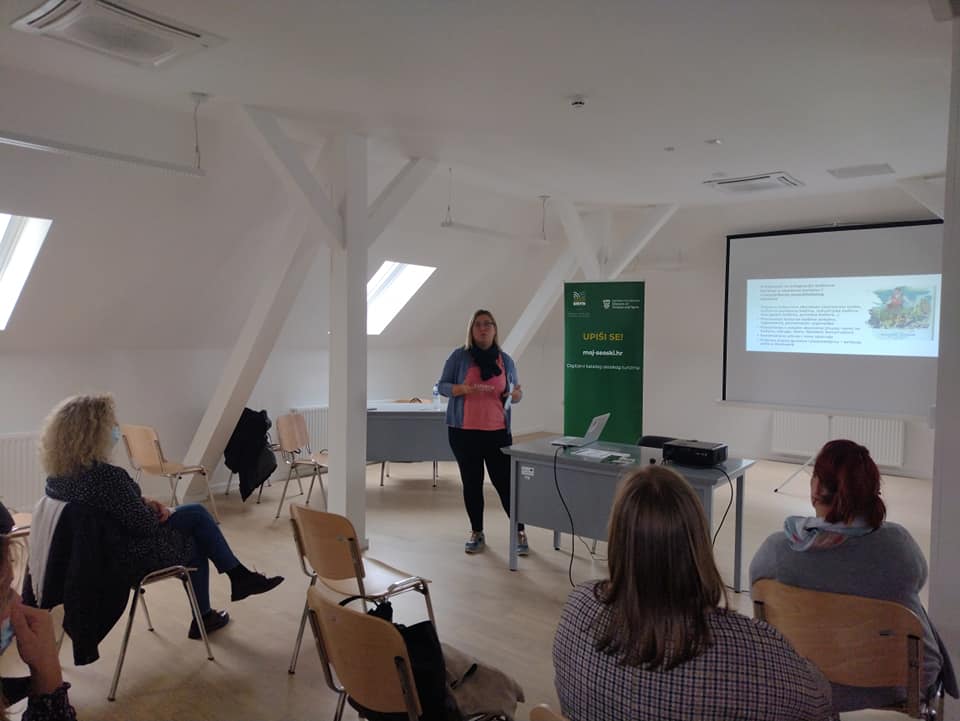 Photo from URTH workshop in Slatina
Photo from URTH workshop in Slatina
So far, we conducted 20 workshops in the regions of Central Croatia, Slavonia and Baranja, and Podunavlje. From next week until the end of the year, we will conduct the workshops in Istria, Kvarner, Lika and Dalmatia. Some service providers were not able to attend earlier workshops, because of work commitments of Covid. So, we decided to also offer access to the workshops online. Tomorrow is our first online workshop for Central Croatia and on Friday it's the online workshop for Slavonia.
These workshops are interactive discussions between our association, service providers and all other stakeholders. We discuss the legislative framework, which can be extremely complex. We talk about new trends in tourism for the post-pandemic era. We also discuss the importance of integrating cultural heritage in digital promotion.
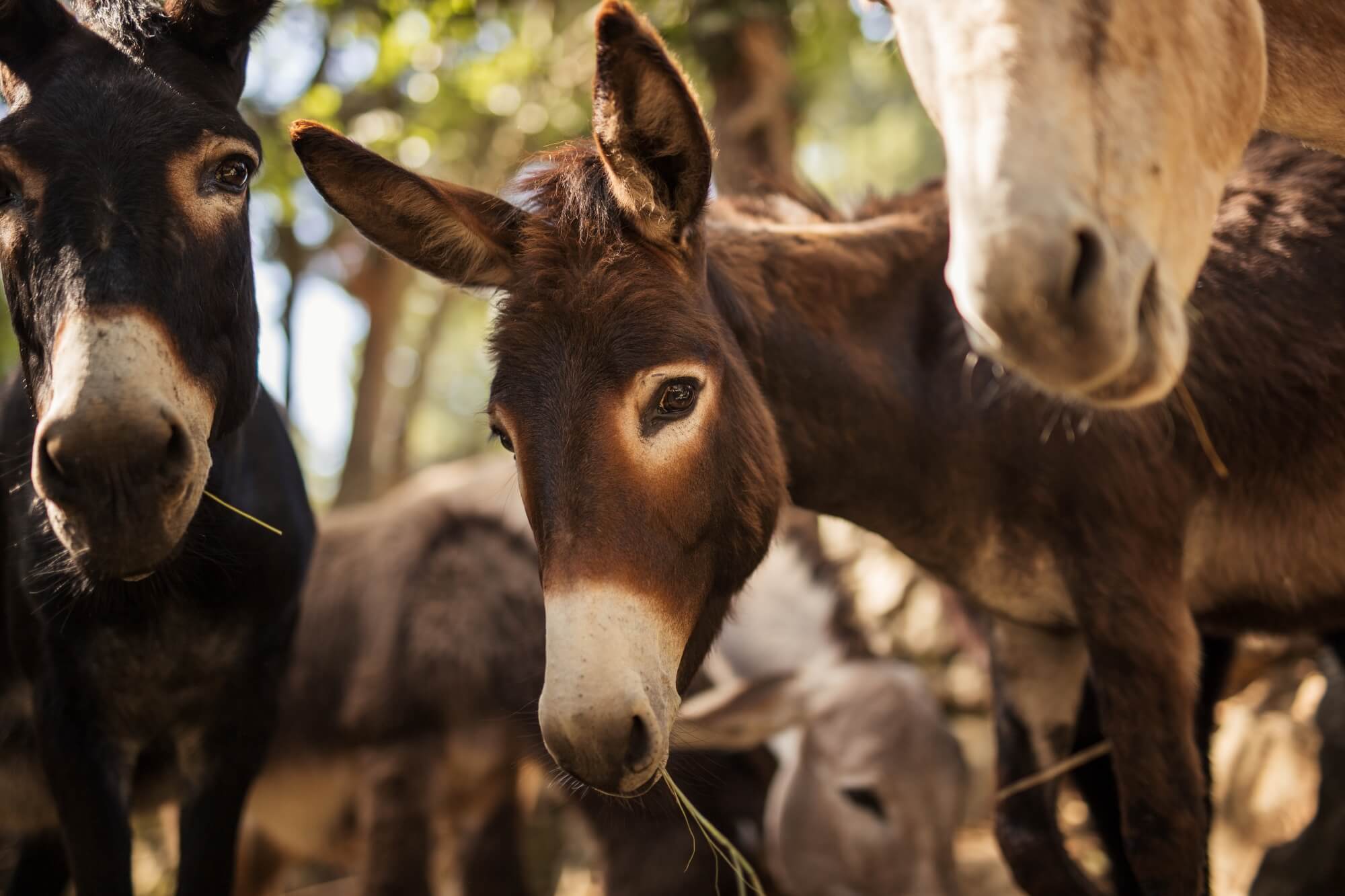 Donkey farm at Agroturizam Antunović on Pelješac
Donkey farm at Agroturizam Antunović on Pelješac
For the legislative framework, we have initiated the formation of a working group for the development of Seoski Tourism, which is now operating in the Croatian Ministry of Tourism and Sports. So, at the workshops, we ask if anyone is having issues. We collect the responses and address them in the working group.
Part of the workshop is the presentation of a new web application of Seoski Tourism, which we have developed with Croatian Ministry of Tourism and Sports. It has two purposes. One is to create a digital catalogue of Croatian Seoski Tourism. You can see region by region some of the Seoski Tourism options – currently around 40, those who have already enrolled.
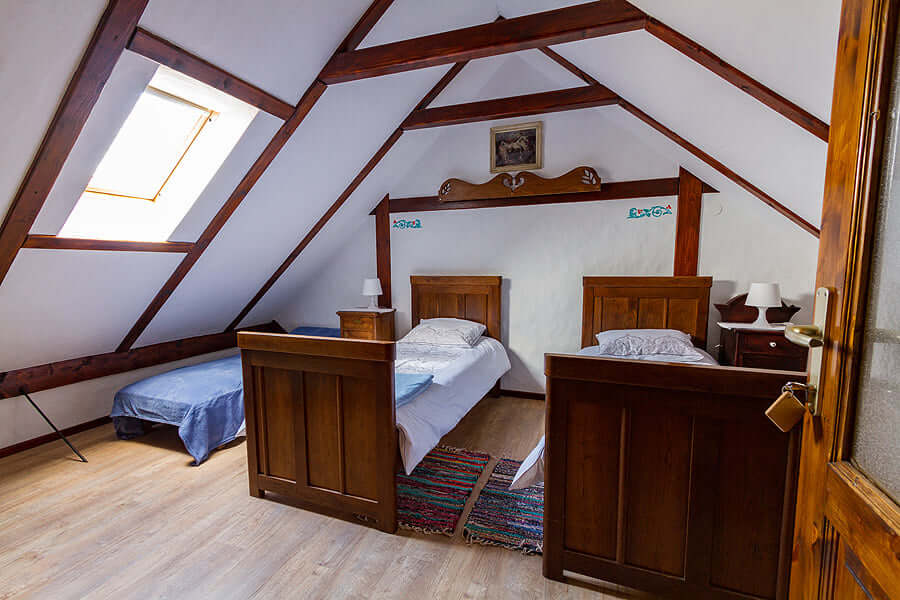 Podravina Etno rooms at Zlatni klas Otrovanec
Podravina Etno rooms at Zlatni klas Otrovanec
A version of the app is currently available on the website of the National Tourist Board. But, they are building a new website. The forthcoming version of the catalogue will likely be more user-friendly with many more functions and options. On the new website, Croatia's Seoski Tourism options will be detailed in many different languages. It should be a great resource not only for tourists but for travel agencies, journalists like you and for educational institutions. That's the reason we are devoting time in our workshops to encourage Seoski Tourism providers to enroll. We are just at the beginning of the process.
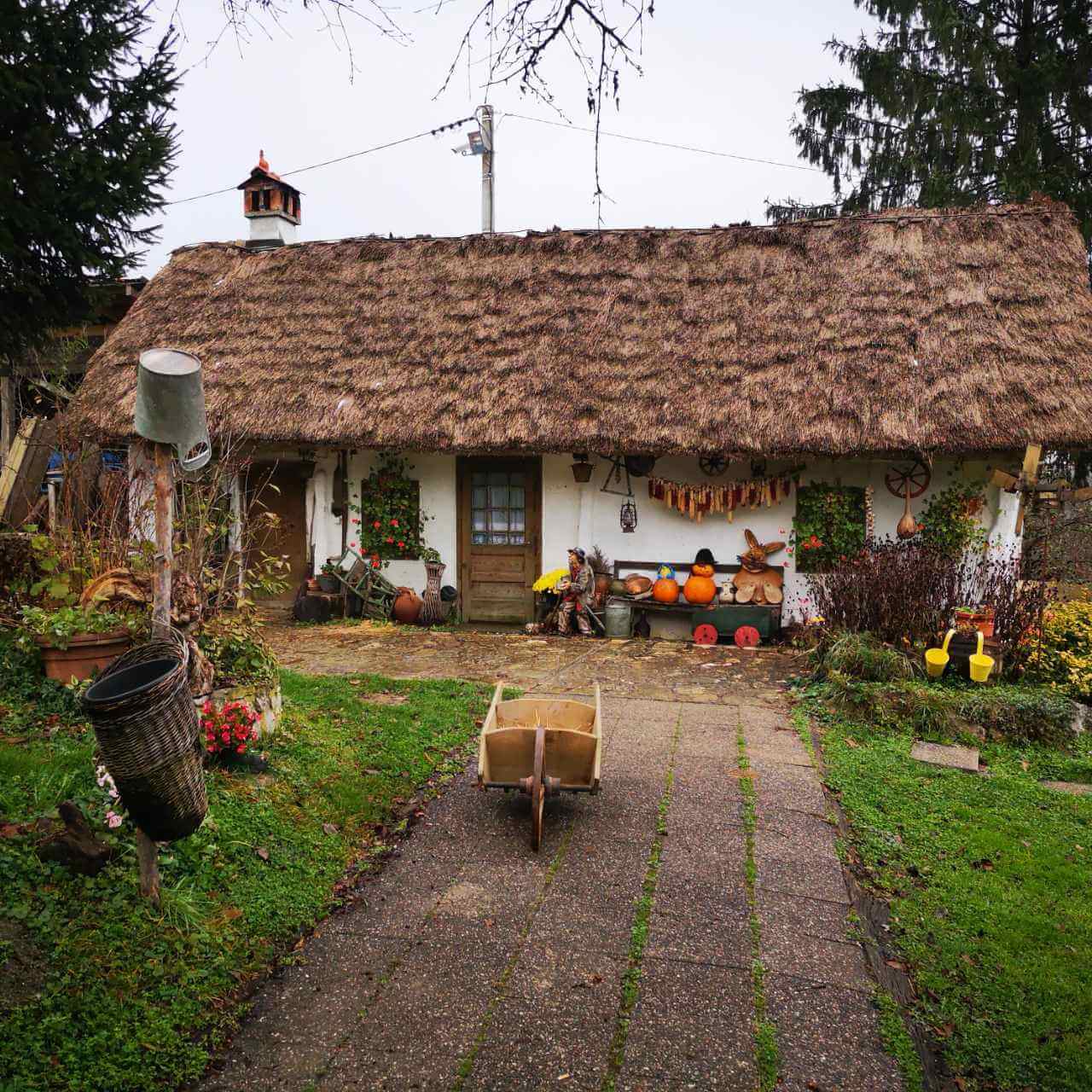 Grešna pilnica in Zagorje © Jasna Podboj
Grešna pilnica in Zagorje © Jasna Podboj
The second purpose of the app is to collect information about the service providers. This info will be used by our working group when defining a Croatian model of Seoski Tourism. So far, we have taken examples from Slovenia, Italy and other countries that are successful with Seoski Tourism. But, these models were entered into our legislative system without fully considering our distinct business and cultural environments. That is now about to change.
We are very happy that, following many years of partially successful advocacy, there is now political will at a ministerial level to really shape things up, to change the laws and regulations in order to facilitate Seoski Tourism. We want to encourage more Seoski Tourism, not to have people from agriculture being turned away because of the difficulty of the process and bureaucracy.
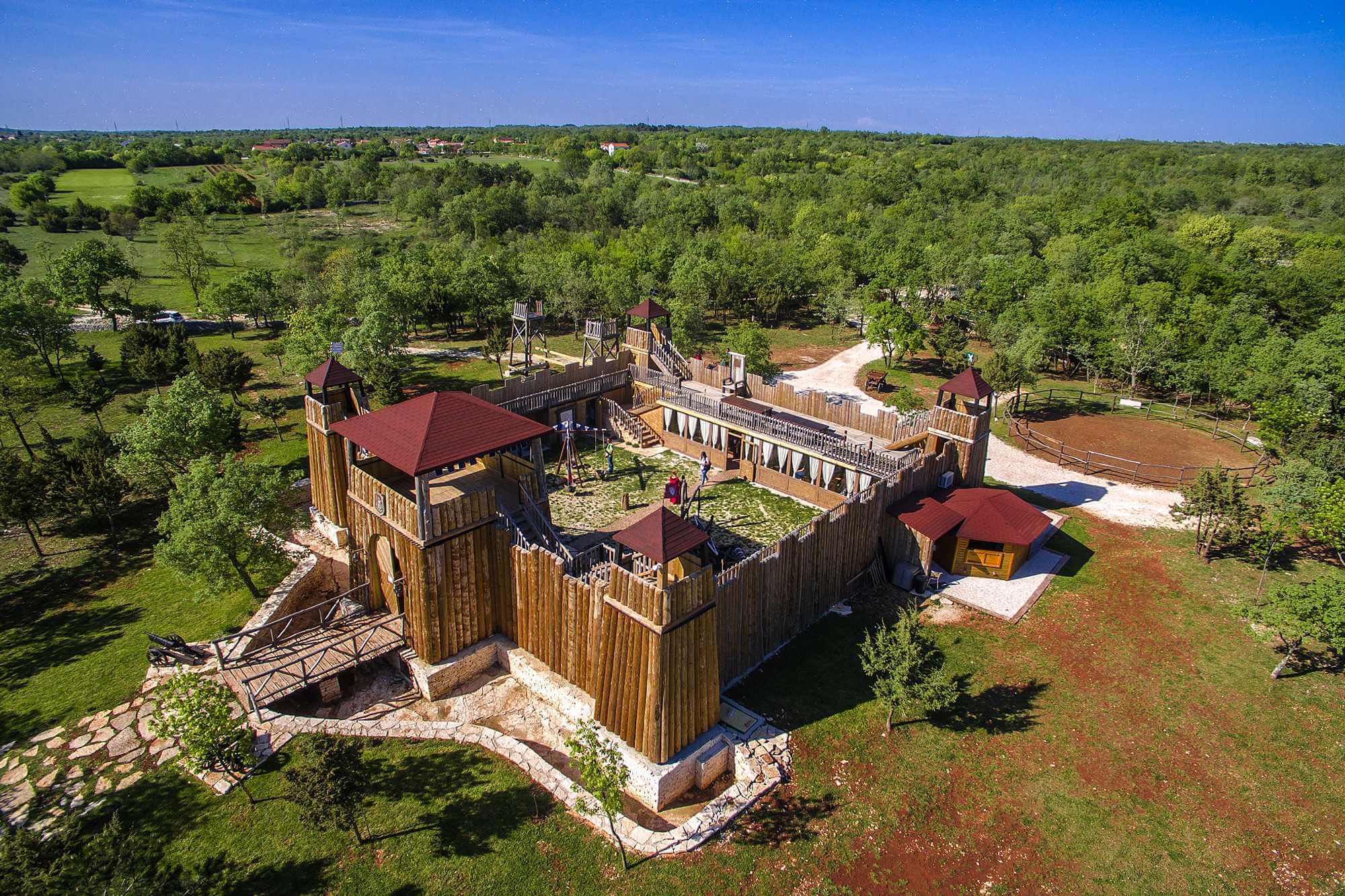 Medieval Theme Park San Michael © Silvia Otočan
Medieval Theme Park San Michael © Silvia Otočan
You said part of the workshops will focus on new trends. What are some of these?
Research has been done by a working group that is developing a new tourism strategy for Croatia. It's called Strategy for Sustainable Tourism to 2030. Under the auspices of this group, a number of research fields have been analysed.
The collected data shows that a huge percentage of tourists are now more inclined to eat locally grown and healthy food. They want to spend their time on estates that are run in accordance with ecological principles. So, they really care about issues like how waste is disposed of etc. They also pay a lot of attention to culture. They are curious to learn exactly how we are living, how we are working and how we produce things. They want to learn about our society and culture. And, importantly, they really care about how they spend their money. Above all, they want to spend money in areas that can help support local communities.
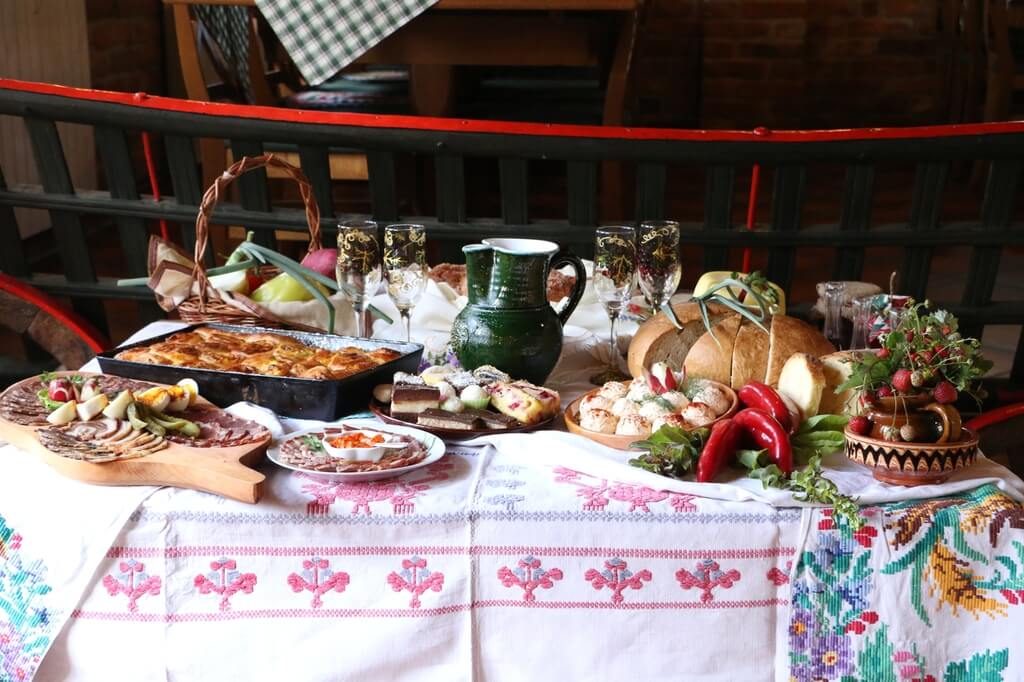 Prigorje Breakfast at Rakić Family Farm
Prigorje Breakfast at Rakić Family Farm
For us, this is really important. Because Seoski Tourism answers these demands to an incredibly high level. We do produce local, healthy food. Not only on the agricultural estates where you can experience Seoski Tourism, but also from their neighbours who just do agriculture. We are concerned with ecology, we protect cultural heritage and the money spent in Seoski Tourism stays in local communities, where it has very beneficial effects.
In the digital promotion part of the workshops we are trying to persuade people about the importance of their online presence. Basically, these days, if you're not online, it's almost like you don't exist. So, we try to explain the importance of having good-quality photos, short videos and a regular online presence.
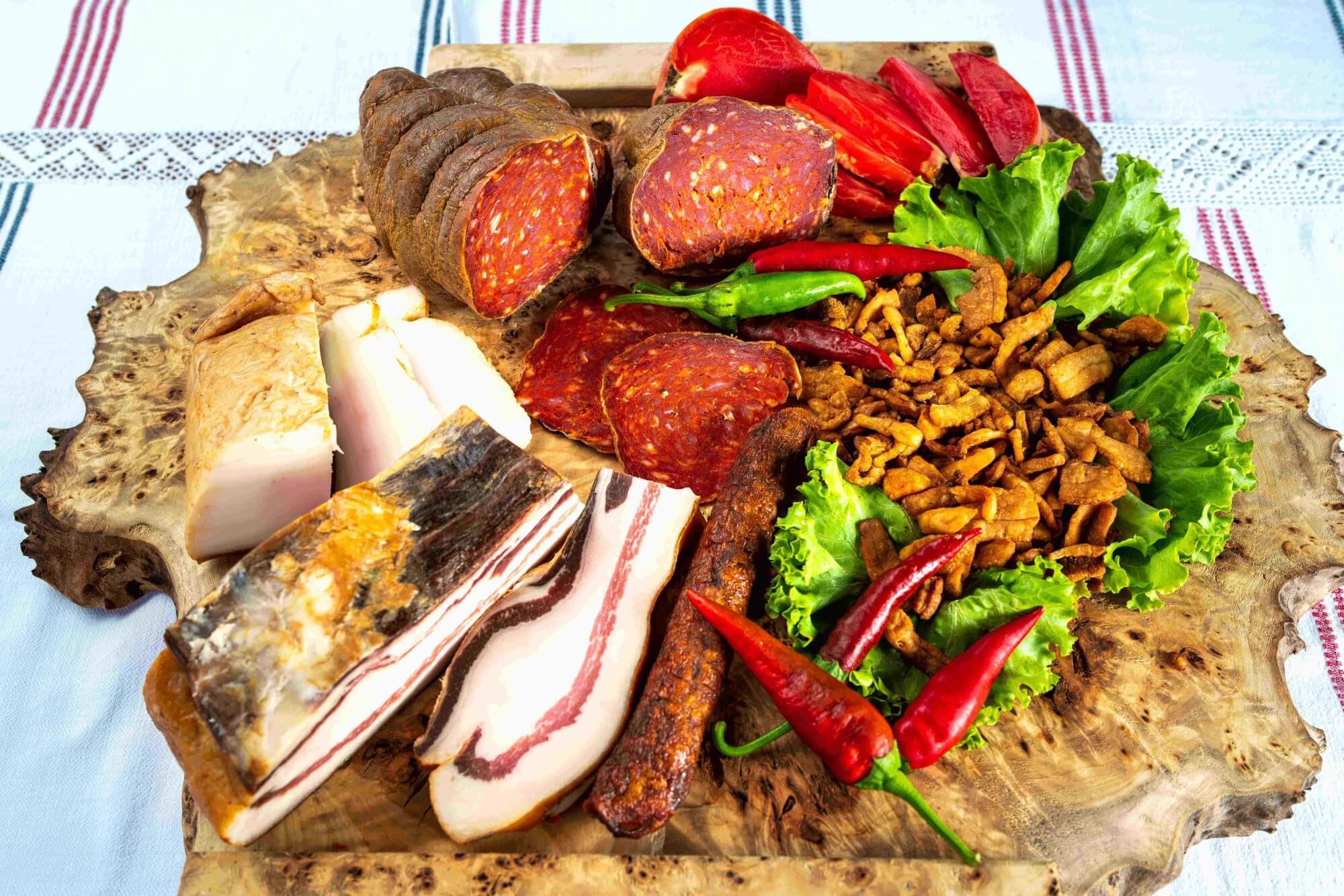 Kulen, čvarci and other specialties at Baranjska kuća © Denis Despot
Kulen, čvarci and other specialties at Baranjska kuća © Denis Despot
That's interesting. In some cases, it might be like two different worlds colliding - people who work in a traditional industry and a traditional environment having to adapt to a very modern way of operating. There's also another potential collision when providers learn of the expectations within modern tourism. Because these people can no longer just work in agriculture. To operate in Seoski Tourism, you're also very much expected to also be a host.
Yes. All of our current service providers who are successful within Seoski Tourism are also great hosts. It's essential. You can see it in almost all of the reviews for this kind of tourism. Guests come for the food and drinks and surroundings, yes. But, what they value the most, what they remember the most, is the host part of the experience. On the estates of Croatian Seoski Tourism, guests are welcomed like family. Across all of Croatian tourism we are expected to be good hosts. It's part of our reputation and the reason why many people come here from all over the world. In Seoski Tourism, it is vital we live up to those expectations.
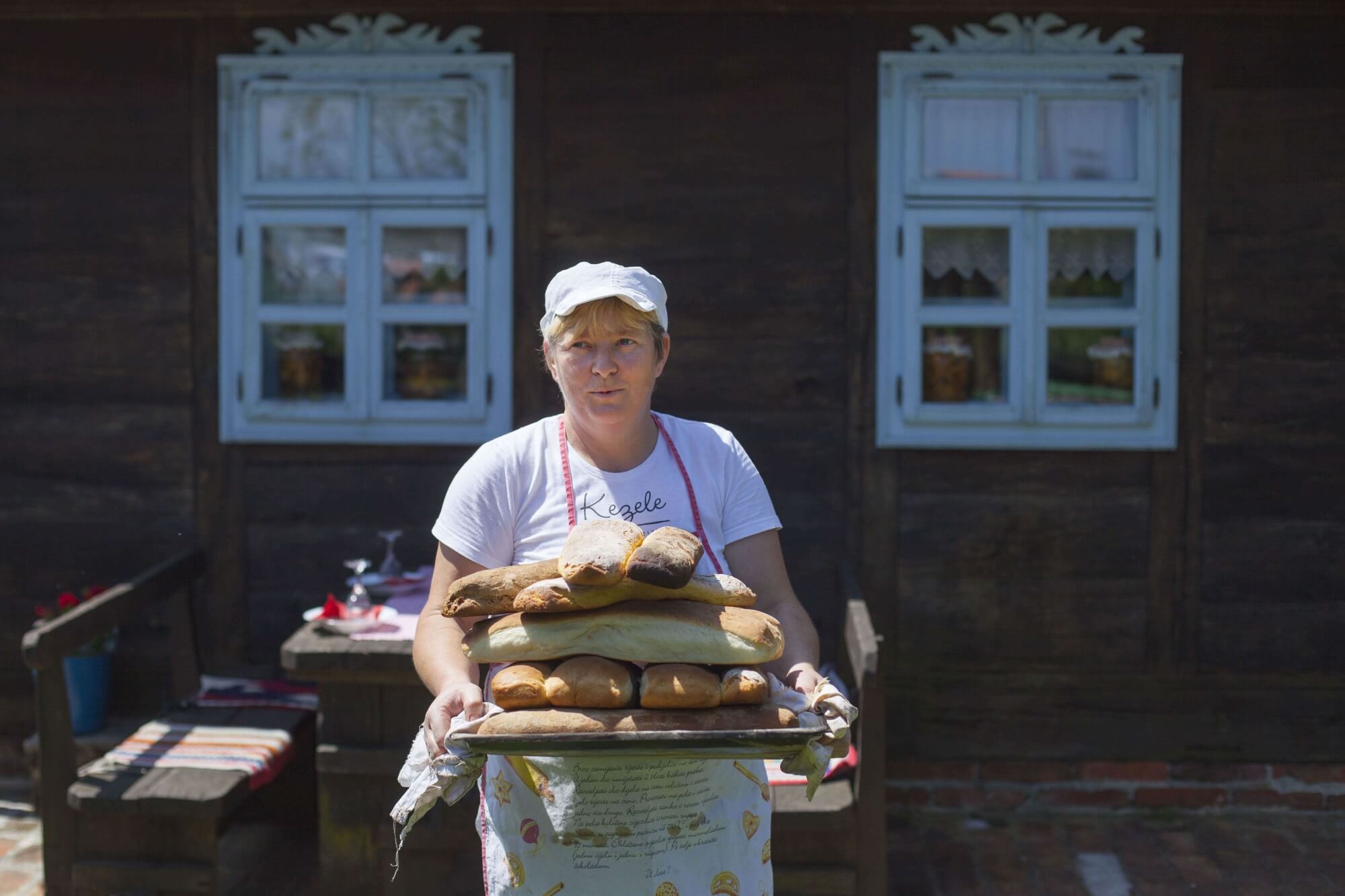 Kezele family farm © Davor Konjikušić
Kezele family farm © Davor Konjikušić
Another aspect of this, which is a more recently-observed element, is that visitors often want an insight into the actual lives, even the personalities of their hosts. They want not only to taste the homemade sausages you make, but they also want to know how you do it, where you do it, how you learned to do that. When they go to Spain, they want to know how the people there make their wine. And, when they come to Croatia, they want to learn how we do it here.
So, all in all, those of us in Seoski Tourism are really busy. We are in agriculture, yes, but we are also in tourism and we are also online. With this more recently-observed aspect, we will need to try and devote even more time to our hosting. It can be difficult to balance the demands on your time. But, in our workshops, we are trying to persuade people to talk more about themselves, their lives, their cultural heritage. And, if there isn't time to do everything themselves, then to involve different and often younger generations of the family. Sometimes within the hosting or alternatively just with the online promotion and presence.
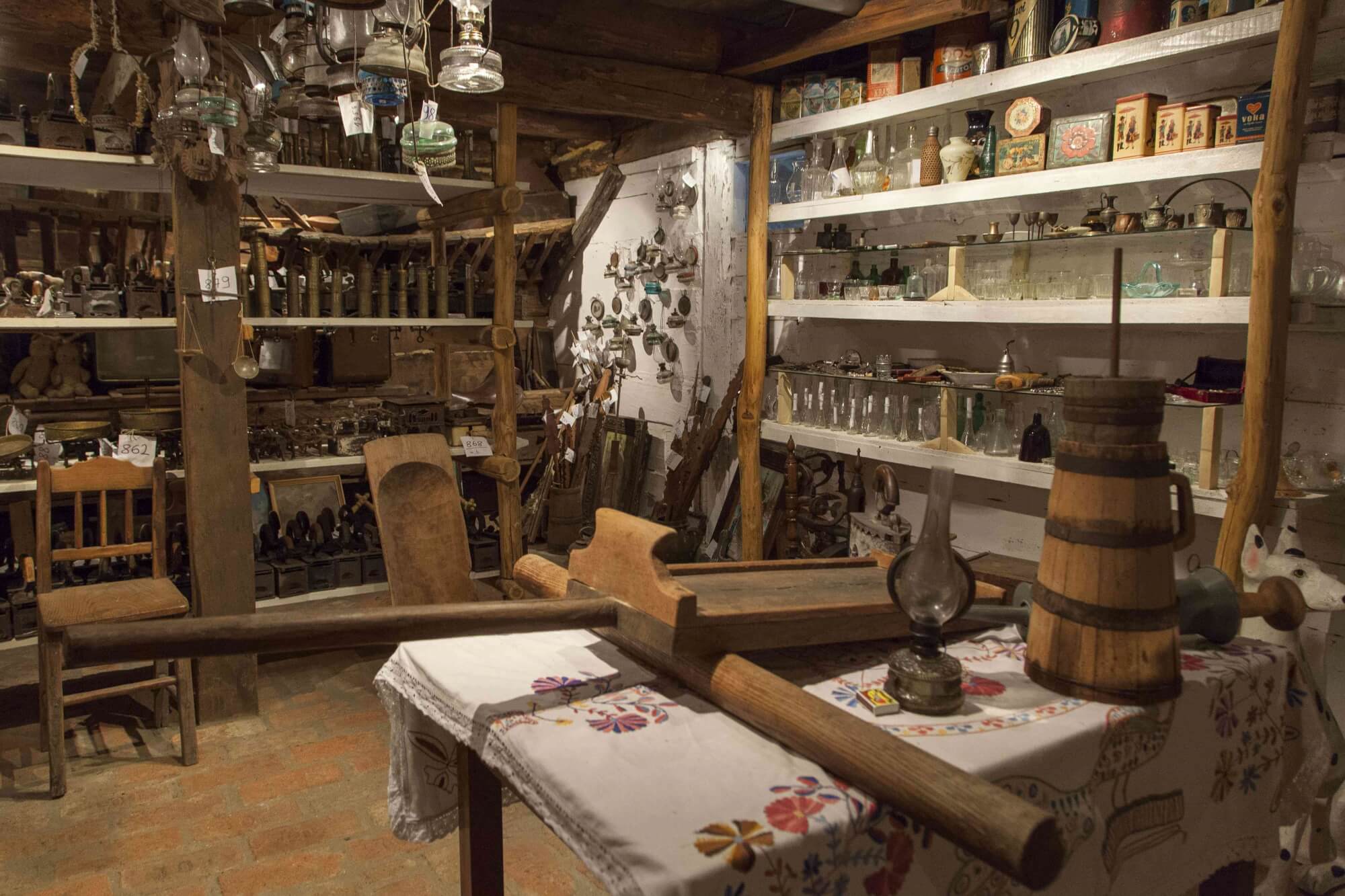 Kezele family farm ethno collection © Davor Konjikušić
Kezele family farm ethno collection © Davor Konjikušić
I've visited some family farms that were right at the start of their journey with Seoski Tourism and they seemed surprised that I was at all interested in what they do and how they do it. I think maybe they thought I was a bit crazy.
Yes, that is a response we sometimes also see at first. I think it's because our generation takes a lot of things for granted. We sometimes think that what we do is just what we do. We are not so good at showcasing it. “Why would I show someone how I make my cheese? I make my cheese like my grandmother used to make it” But, for those who open their doors to Seoski Tourism, inquiries about how they do what they do are only increasing. So, they seem to appreciate how we advise them in the workshops.
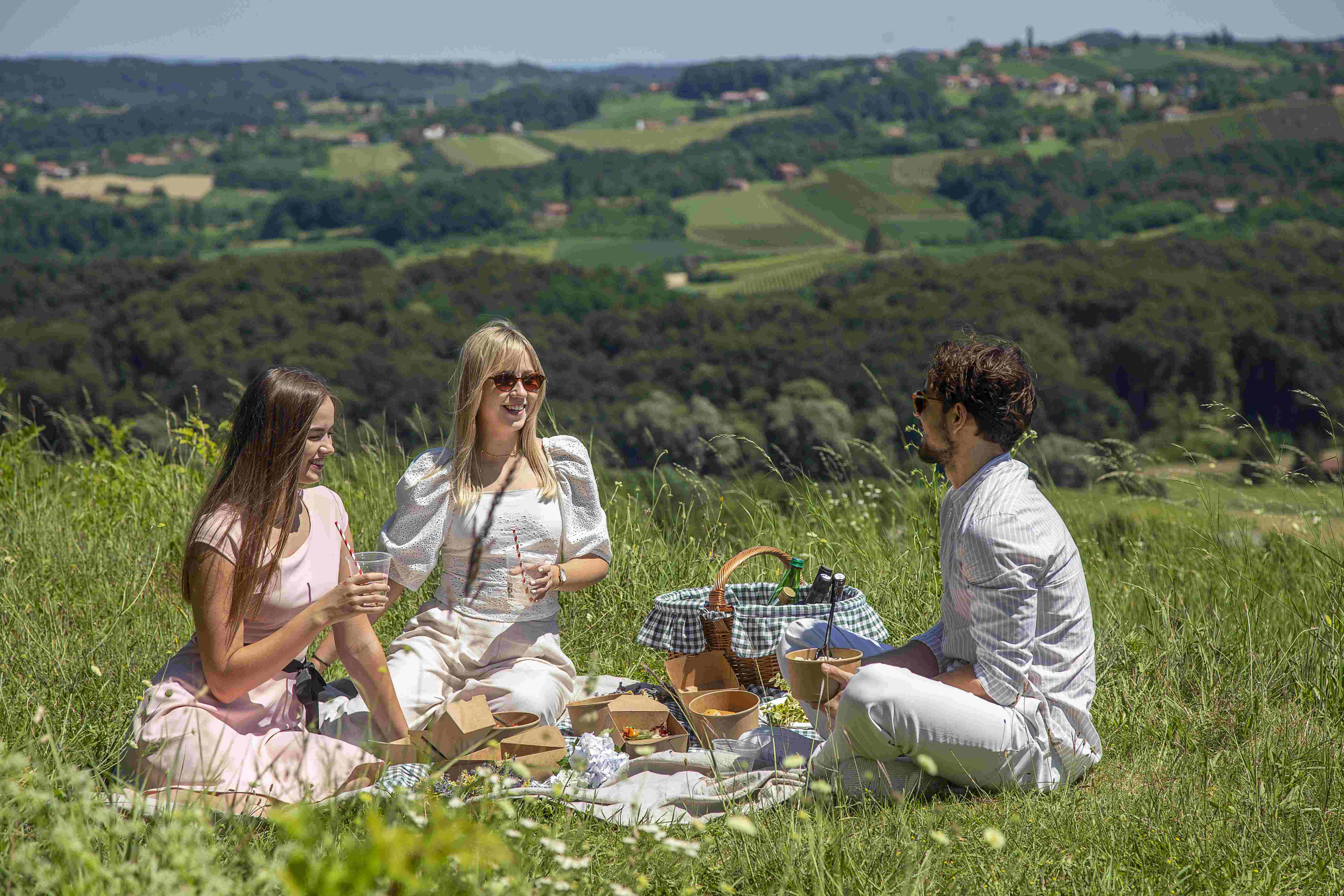 Picnic by Restaurant Međimurski dvori © Igor Nobilo
Picnic by Restaurant Međimurski dvori © Igor Nobilo
We are trying to let our producers know that Seoski Tourism is not just a platform to sell their produce and an overnight stay, but it's a full experience they can sell. There are agricultural farms in Austria that are established in tourism that you must pay only to visit. Of course, that doesn't happen currently anywhere in Croatia, even though some of our Seoski Tourism estates have sections that look like museums.
Some of these aspects are very new. And the feedback is great. I truly believe there are hidden treasures to be discovered in some Croatian villages. We are here to tell that story.
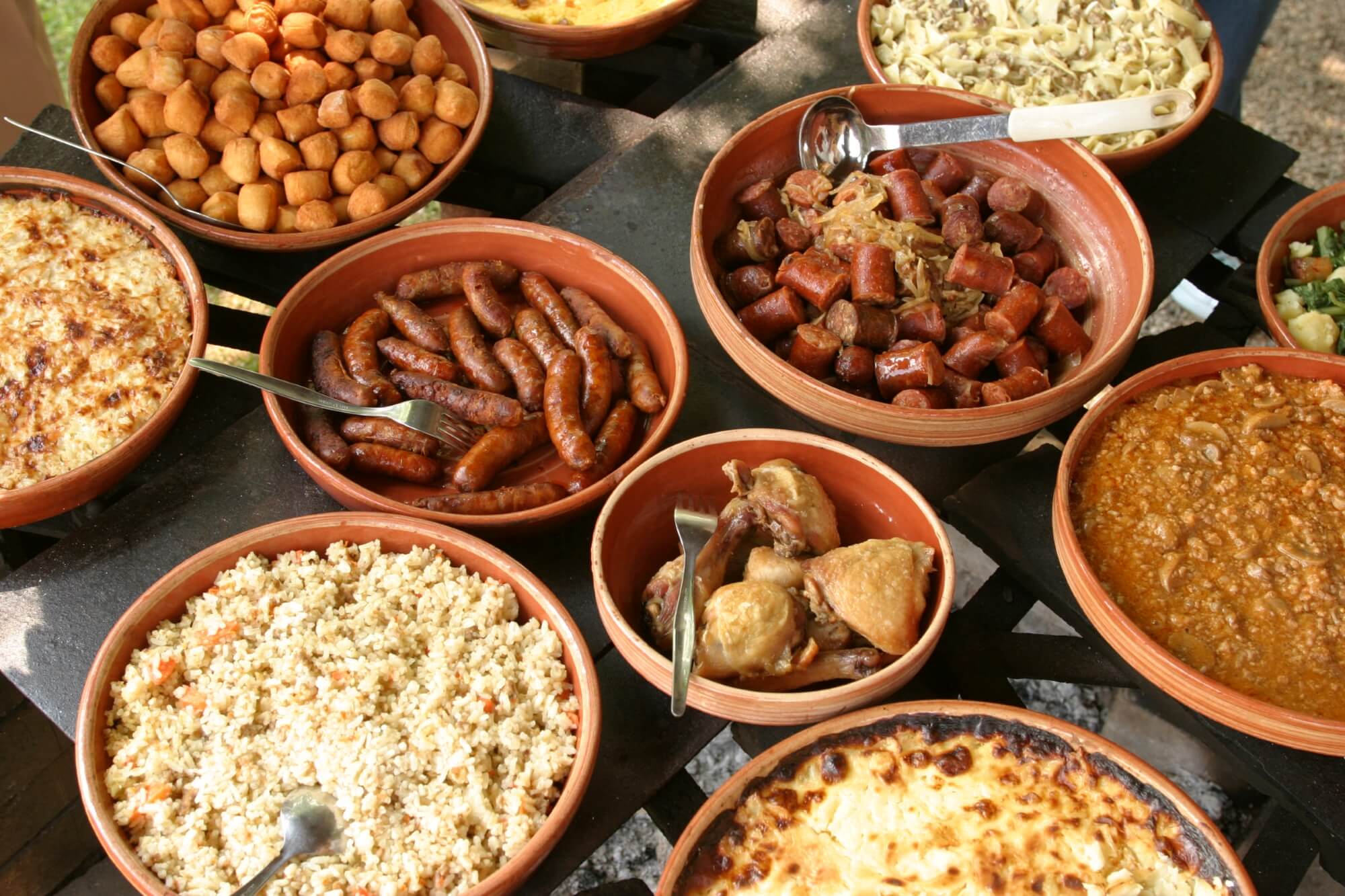 Selection of food from a Slavonian village © Mario Romulić
Selection of food from a Slavonian village © Mario Romulić
What is so rewarding about Croatian Seoski Tourism that international visitors would want to go to a traditional farm in some inland village instead of lying on the beach in Dalmatia for 14 days?
People come because they really want to see a different side of Croatia. And, there are many different aspects of Croatia to discover – not just Seoski Tourism, but also National Parks and Nature Parks. All of our current trends show us that more and more tourists are willing to come inland from the coast or to explore a different part of Croatia – inland Istria, for example, or continental Croatia.
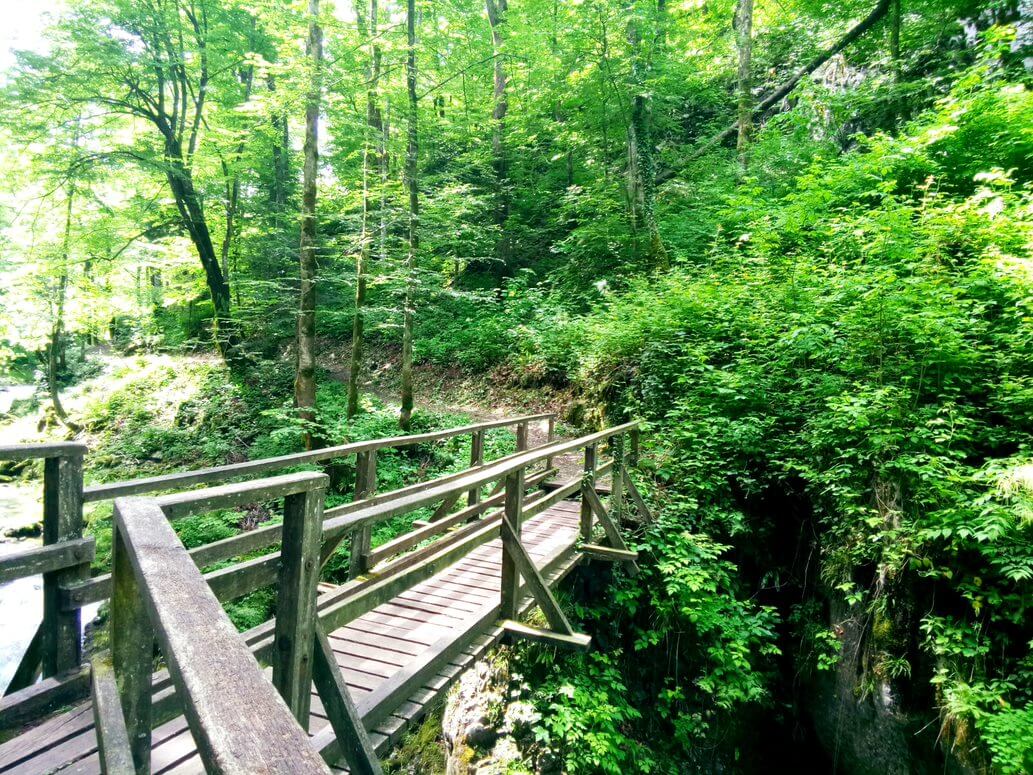 Kamačnik river canyon © Aleksandra Kuratko Pani
Kamačnik river canyon © Aleksandra Kuratko Pani
They really want to try authentic, local food. They want to eat healthy, to know what they are eating and how it is made. And, they want to experience flavours that are different from the usual ones they get from the supermarket.
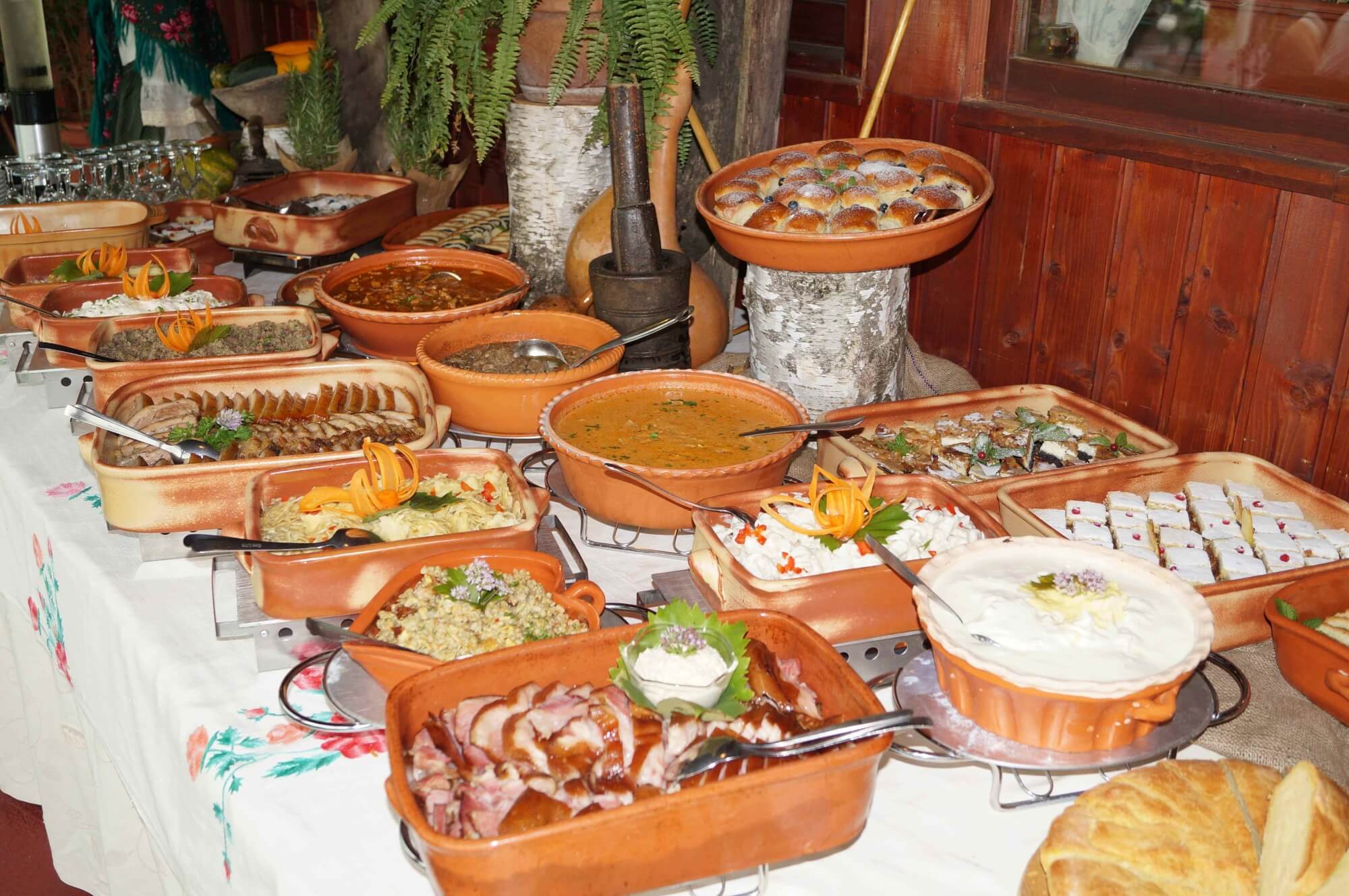 Traditional Međimurje table at Etno restaurant Međimurski dvori
Traditional Međimurje table at Etno restaurant Međimurski dvori
Also, I would say that with Seoski Tourism, people get to know better an authentic version of Croatia and its culture. It's a story we hear very often from our members. Some of them are visited by large groups from cruisers. These are people who might be on a cruise on the Adriatic and who journey inland for a day trip. Or, it might be a group who are cruising the Danube and disembark to visit a family farm in Slavonia, Baranja or Srijem.
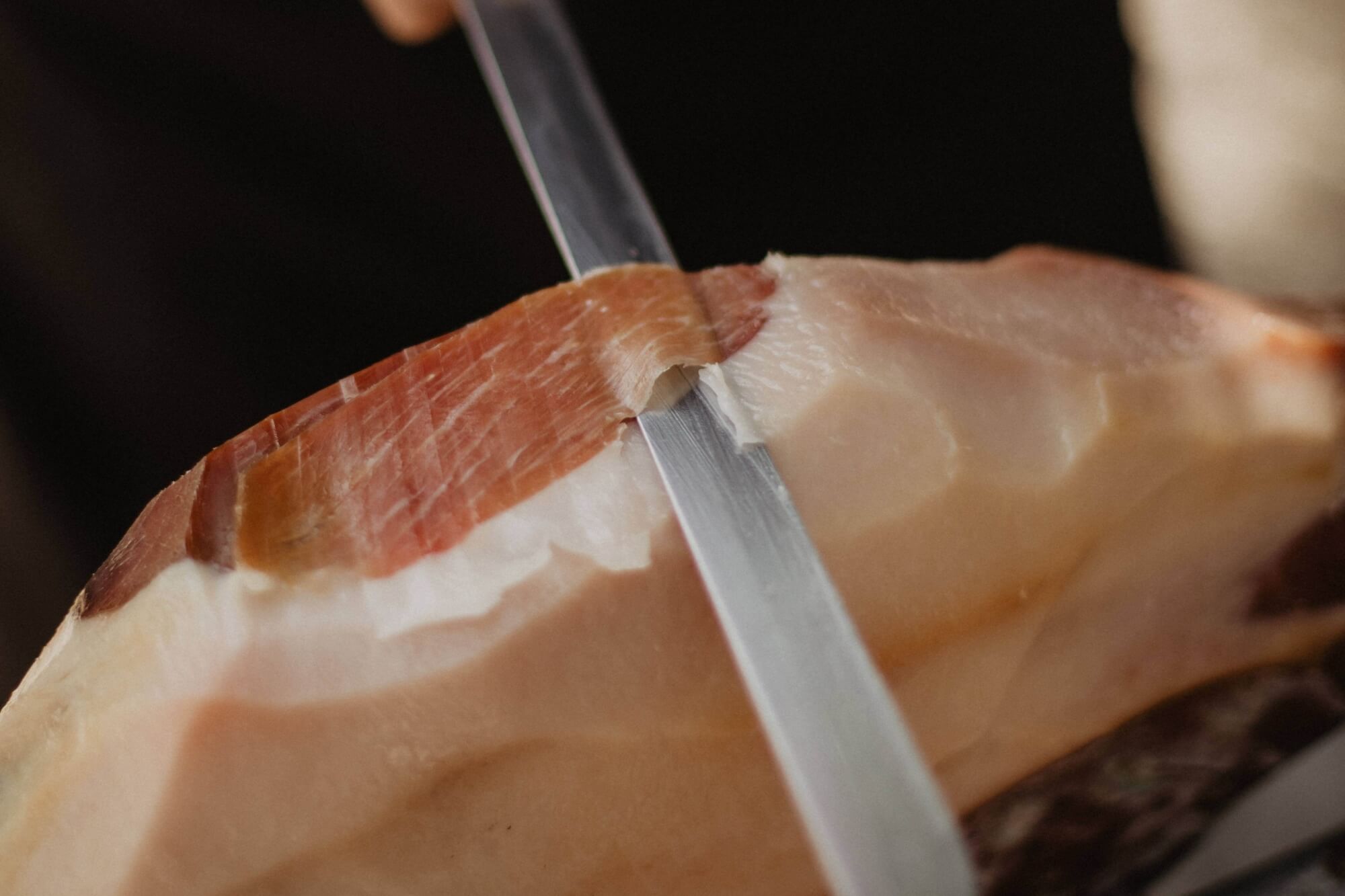 Prosciutto from Drniš at Agrotourism Kalpić © Ivana Kalpić
Prosciutto from Drniš at Agrotourism Kalpić © Ivana Kalpić
When they visit farming estates on day trips, it's very often a huge 'wow' moment for them. For many, in their minds, Croatia is simply sun and sea. And that's not entirely their fault. We, as a country, have done very little until now to promote alternative sides of Croatia. The visitors experience these wow moments because of the hospitality they receive and because of the tangible aspect of the visit. This is a modern aspect – people want to touch things, know how things feel, taste, smell. They want to ride on horses or feed them. Or take part in cultural activities. These parts of a visit to Seoski Tourism are very difficult to experience anywhere else.
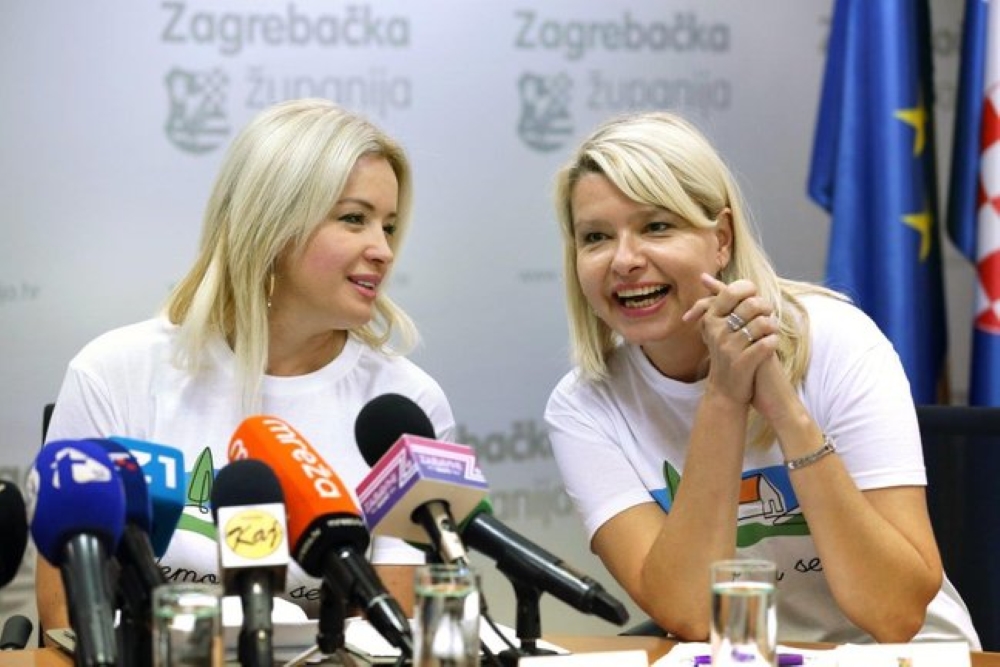 (left) Ivana Alilović, director of Zagreb County Tourist Board (right) Aleksandra Kuratko, secretary of Udruga ruralnog turizma Hrvatske (Croatian Rural Tourism Association) © Zagreb County
(left) Ivana Alilović, director of Zagreb County Tourist Board (right) Aleksandra Kuratko, secretary of Udruga ruralnog turizma Hrvatske (Croatian Rural Tourism Association) © Zagreb County
Udruga ruralnog turizma Hrvatske's online Seoski Tourism workshops begin today and their physical workshops continue next week in Istria.
If you'd like to read more about rural tourism in Croatia, then look here
Traditional Potravlje Pottery Workshop Hosted by Sinj Tourist Board (VIDEO)
October 26, 2021 - Traditional Potravlje pottery was again in the spotlight in Sinj thanks to an educational workshop led by Ivan Knezović.
On Friday, October 21, 2021, the Sinj Tourist Board, with the support of the Ministry of Culture and Media of the Republic of Croatia, the Museum of Cetina Krajina - Sinj, and the City of Sinj, organized two educational workshops for children and adults about traditional hand wheel pottery from Potravlje.
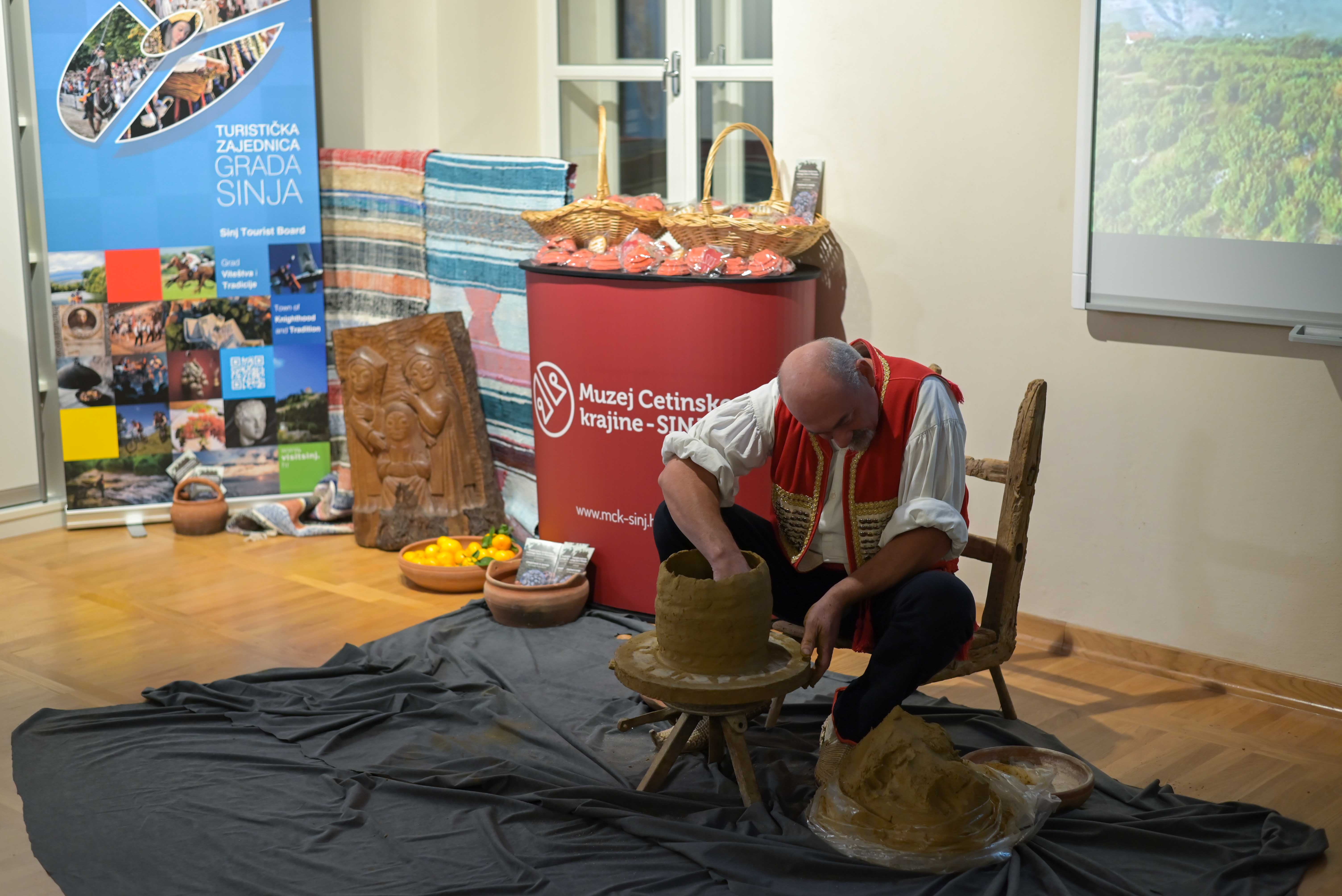
Željko Zrnčić
After last year's break, and due to increased interest, for the sixth time, several workshops were organized. As in previous years, the workshop for children was held in cooperation with the kindergarten "Bili Cvitak" and Mrs. Ana Glavinović, who assisted Ivan Knezović in making objects from clay. At the end of the workshop, the proud little participants took their handicrafts with them to decorate the premises of the kindergarten. This year, the students of the 4th grade of the Technical and Industrial School of Ruđer Bošković, who participated in the school project Research of Cultural Heritage under the mentorship of Professor Branimir Romac, also joined the workshops.
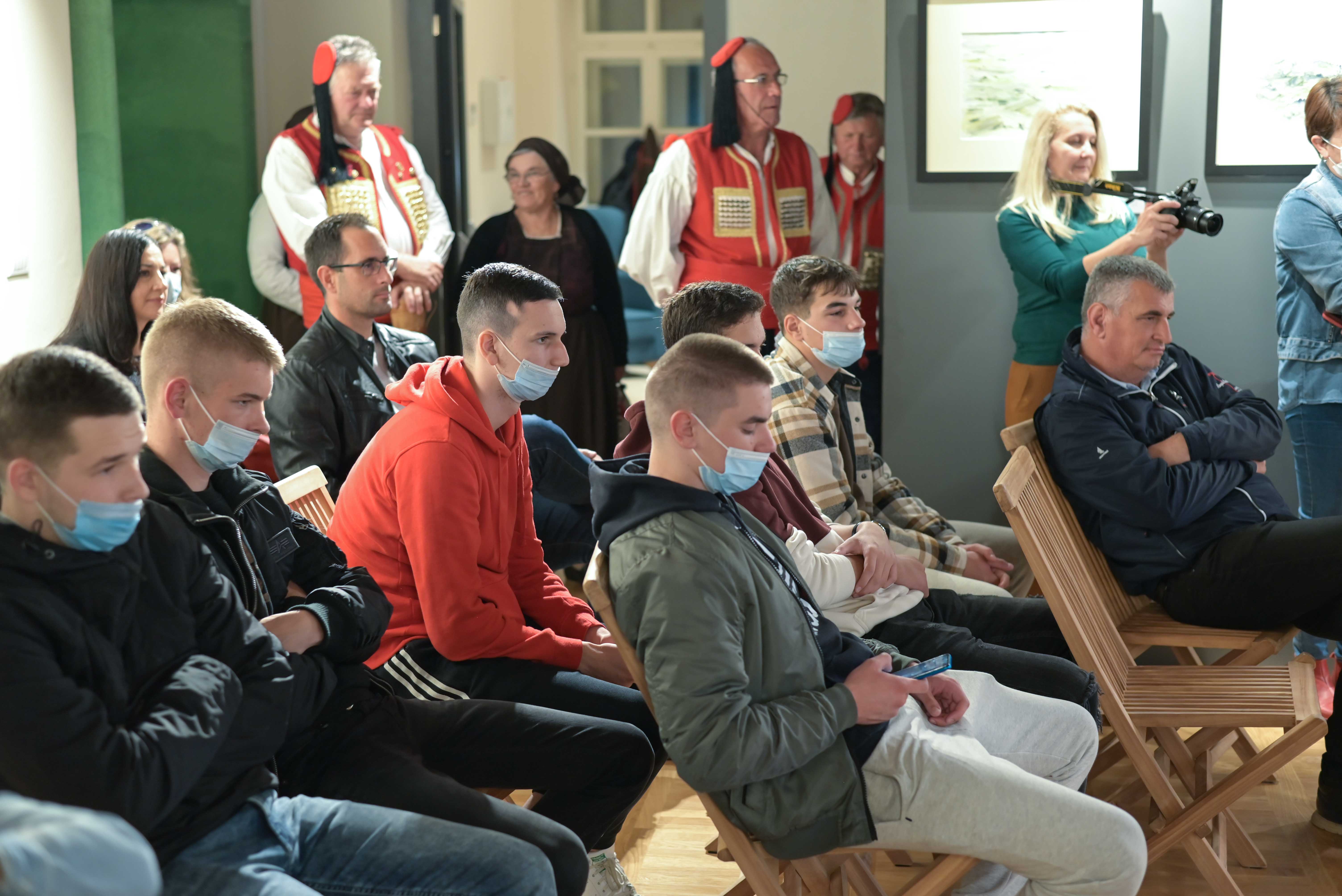
Željko Zrnčić
Ivan Knezović, who regularly leads these educational workshops, is also among the last to engage in this traditional craft. Traditional hand pottery from Potravlje has had the status of an intangible cultural property since 2013. Accordingly, the Ministry of Culture of the Republic of Croatia nominated it for the protection of UNESCO.
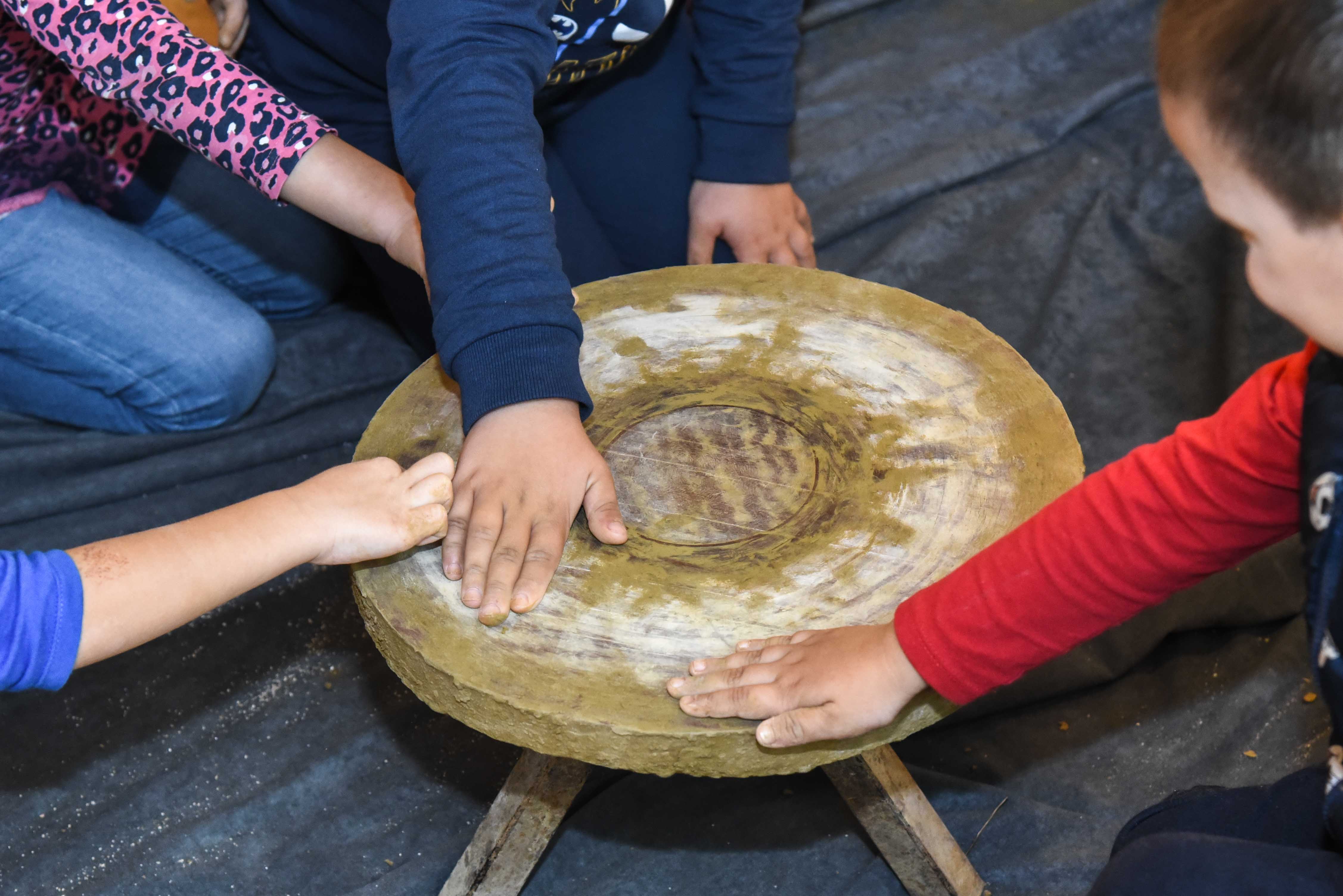
Željko Zrnčić
It is imperative to preserve this segment of traditional culture and continue living by passing it on to younger generations. With this goal in mind, the Sinj Tourist Board, with the support of the Ministry of Culture of the Republic of Croatia, holds workshops on Traditional hand pottery from Potravlje. Due to the large number of participants who wanted to try to make valuable objects and successfully implement all epidemiological measures, the workshops were held from 16:00 to 20:30.
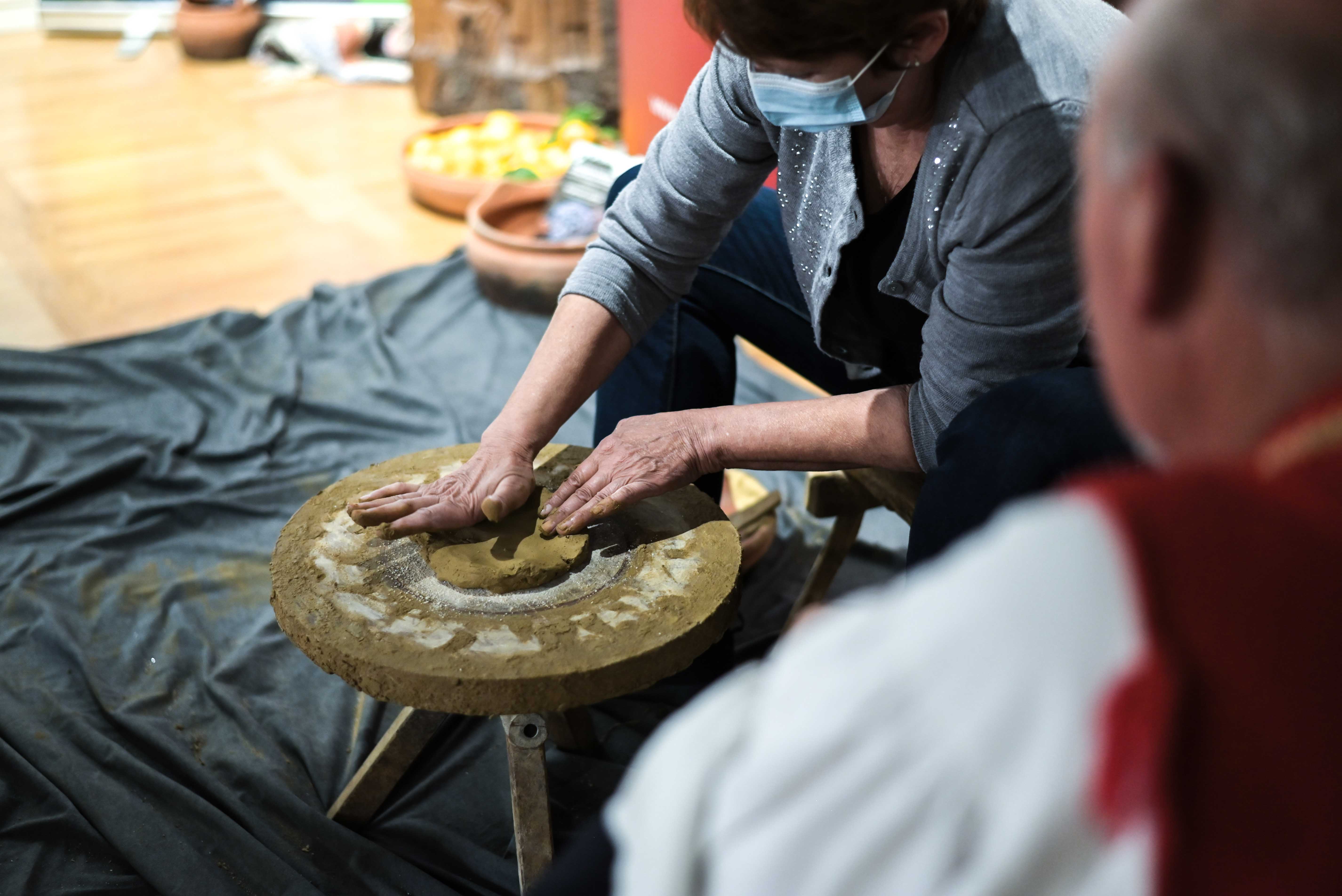
Željko Zrnčić
In the introductory part, Danijela Petričević Banović, curator of the Museum of the Cetina Region in Sinj, gave an interesting and instructive lecture on traditional pottery. This was followed by a presentation and guidance of Ivan Knezović through the stages of preparation and processing of clay to the final pottery. Anyone who expressed a desire and interest could participate in making pottery under his expert guidance. Workshop participants received unique souvenirs personally made by the leader, Ivan Knezović, and the youngest participants received small gifts and gingerbread as souvenirs.
In addition to these workshops, in the musical part of the evening, members of the Association for the Preservation of Heritage of the Cetina Region and KUD Dicmo performed traditional melodies of ojkavica: male and female rera, which is also on the list of intangible heritage of the Ministry of Culture and Media of the Republic of Croatia.
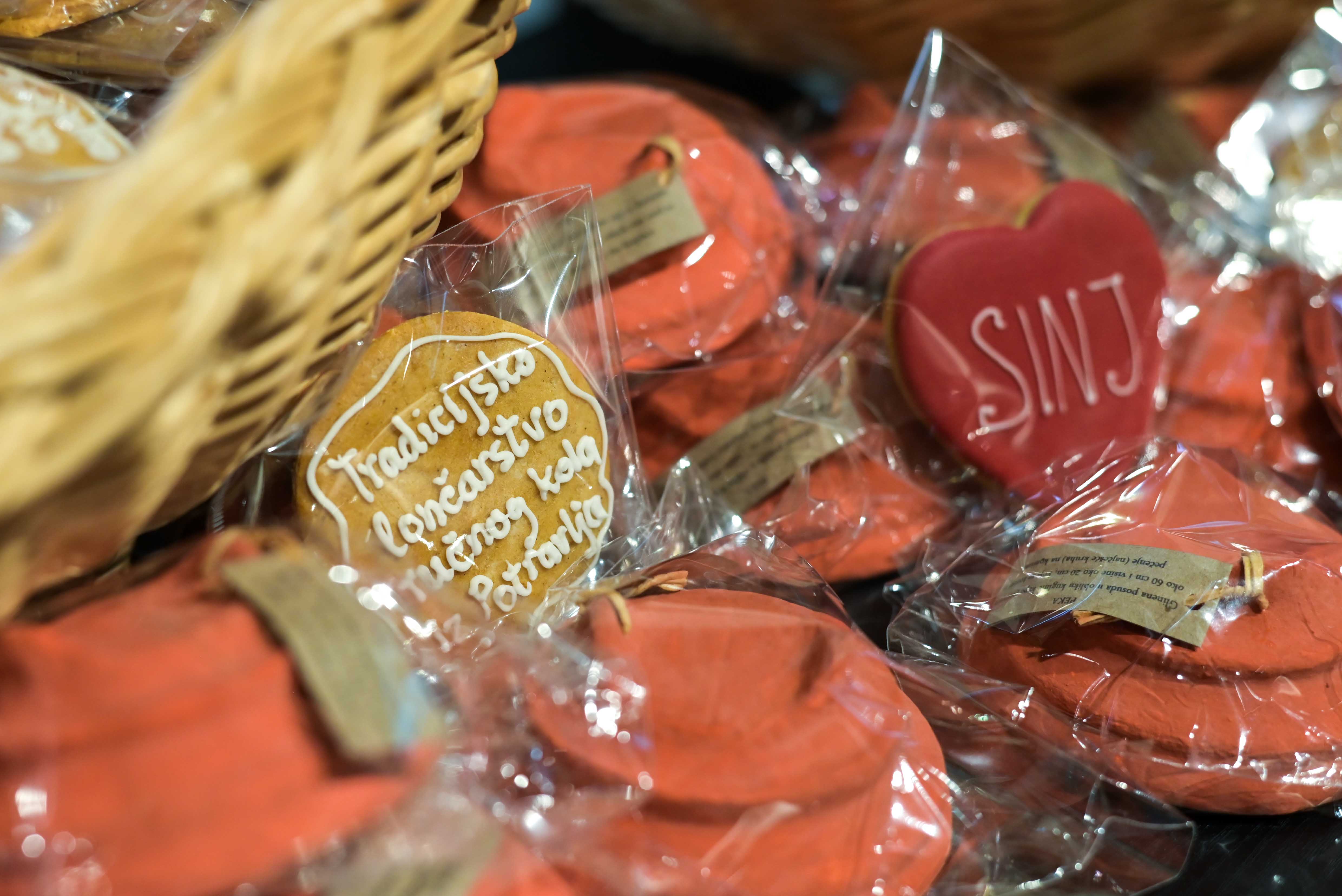
Željko Zrnčić
You can see the production process and scenes from the workshop below:
This workshop is co-financed by the Ministry of Culture and Media of the Republic of Croatia. The Sinj Tourist Board genuinely thanked everyone who helped them in the realization of this project.
Sinj Tourist Board Wins Plautilla International Cultural Tourism Award
October 22, 2022 - The Sinj Tourist Board is the Plautilla international cultural tourism award winner!
This is an award for a cultural tourism product characterized by quality and creative interpretation of cultural and historical heritage. In this case, the plaque was awarded to Sinj in the Best Cultural Tourism Product for the "1715 Battle of Sinj" play.
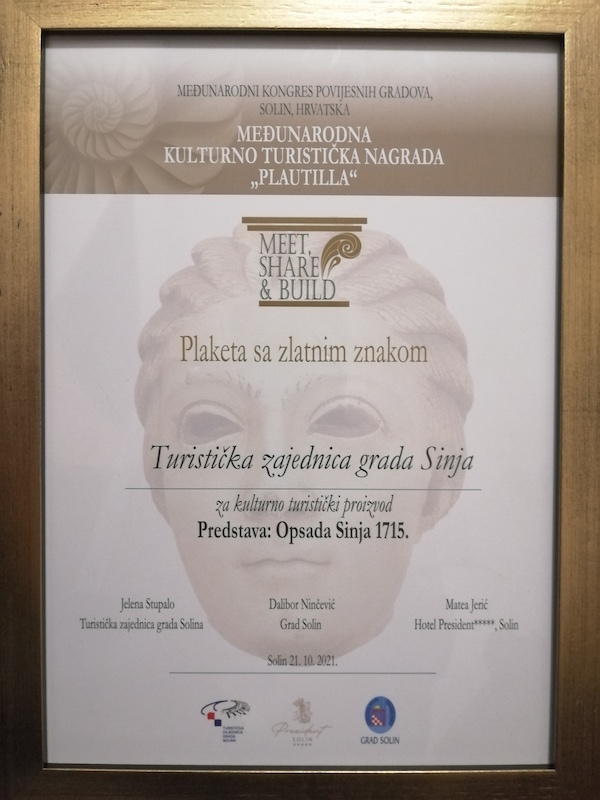
The Sinj Tourist Board was awarded for the best cultural tourism product as part of the 7th International Congress of Historic Cities, organized by the Solin Tourist Board, Hotel President Solin, and the City of Solin, held from October 19 to 22, 2021, at the Hotel President in Solin, under the auspices of the Ministry of Culture and Media, Ministry of Tourism and Sport, Split-Dalmatia County Tourist Board, Split-Dalmatia County, Croatian Association of Historic Towns, Public Institutions of Culture Zvonimir, Split Tourist Board, Split City Museum, Split Archaeological Museum and Klis Municipality.
Under the motto "Meet, share and build," this congress aims at critical stakeholders in managing historic cities, from local governments, tourist boards, and representatives of cultural institutions to travel agencies and educational institutions. The congress program consists of lectures and panel discussions, emphasizing meetings, exchanging experiences, and developing new tourist products in the historic cities of Croatia and abroad. Therefore, the Sinj Tourist Board is honored because, among many institutions and other candidates, the "1715 Battle of Sinj" play won in the Best Cultural Tourism Product category.
It should be noted that the Sinj Tourist Board has already won the bronze plaque for the Best Cultural Tourism Product for their traditional Potravlje handmade pottery workshop.
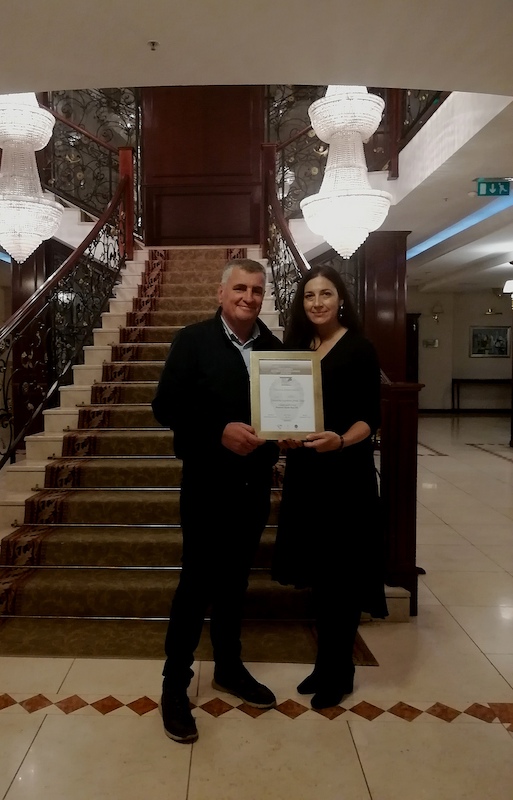
"We thank our colleagues from Solin as well as the organizing committee that recognized and rewarded our work. Finally, we thank everyone who contributed to the continuity of the 1715 Battle of Sinj play, and we dedicate the award to our defenders, to whom the play is inspired and dedicated," said the Sinj Tourist Board.
The award was accepted at the ceremony by Miro Bulj, President of the Sinj Tourist Board.
For more on travel in Croatia, follow TCN's dedicated page.


